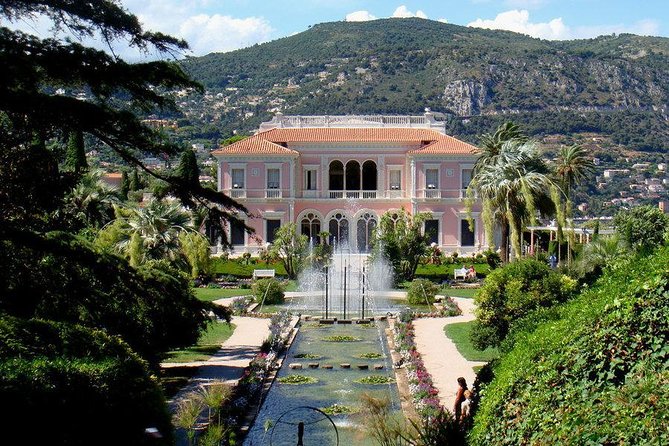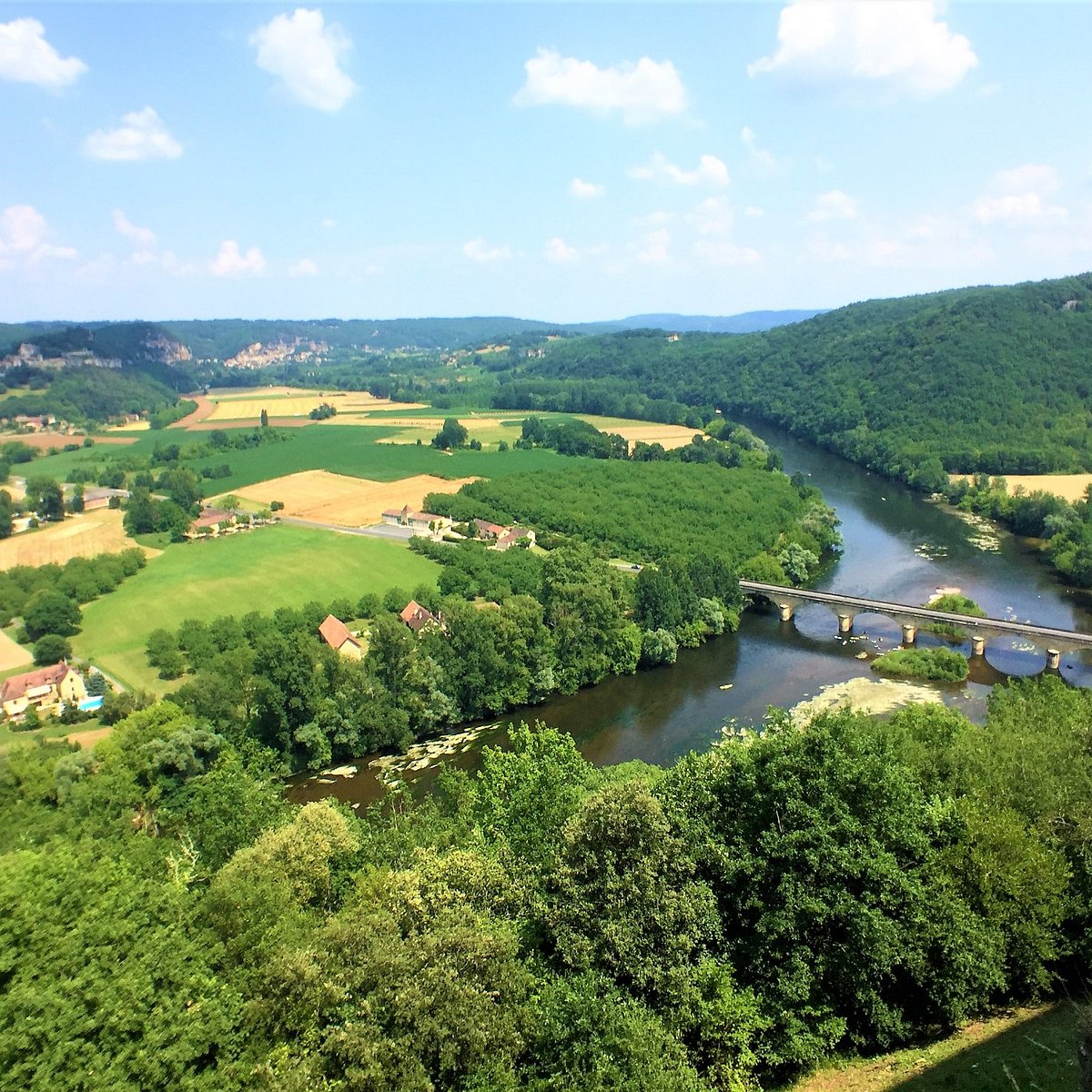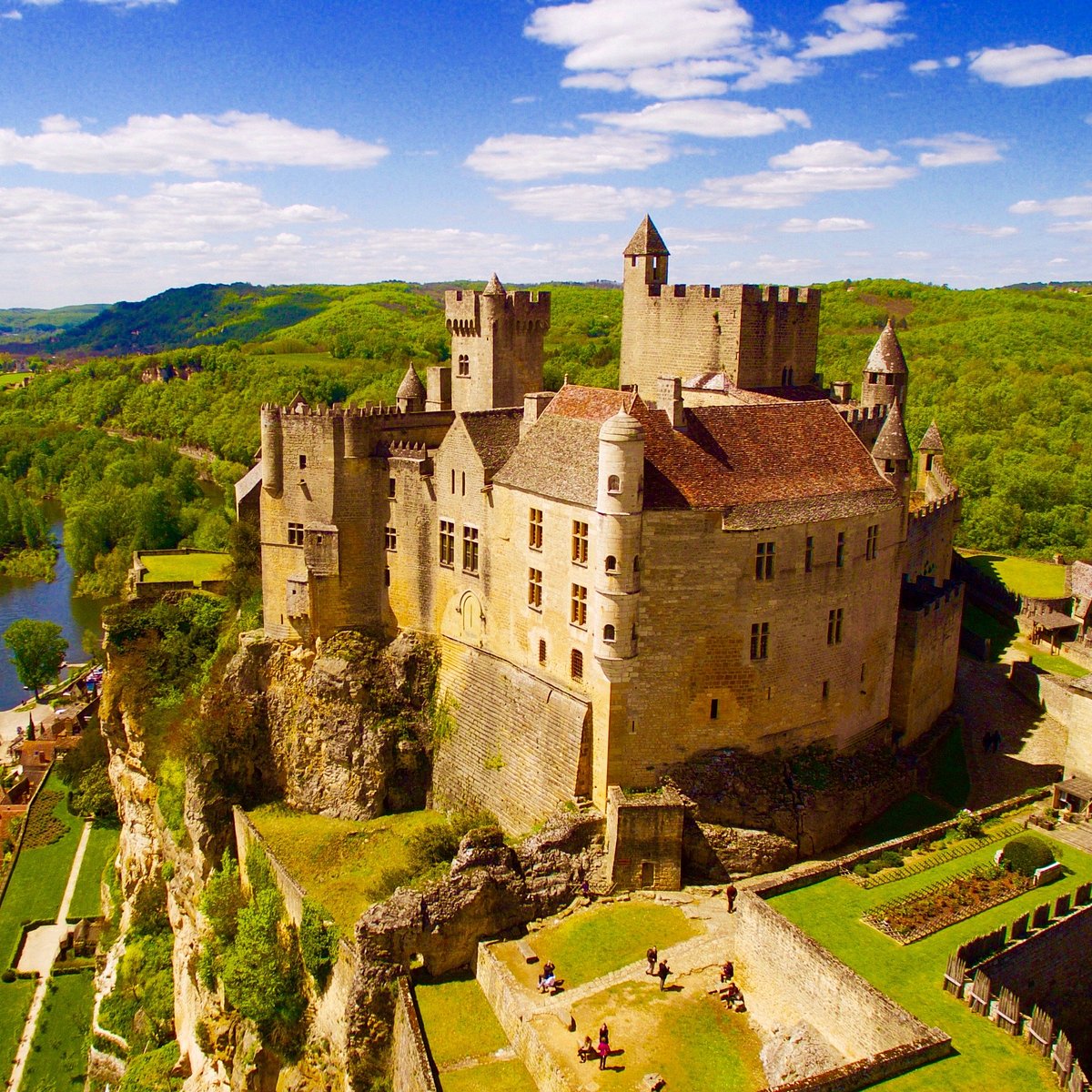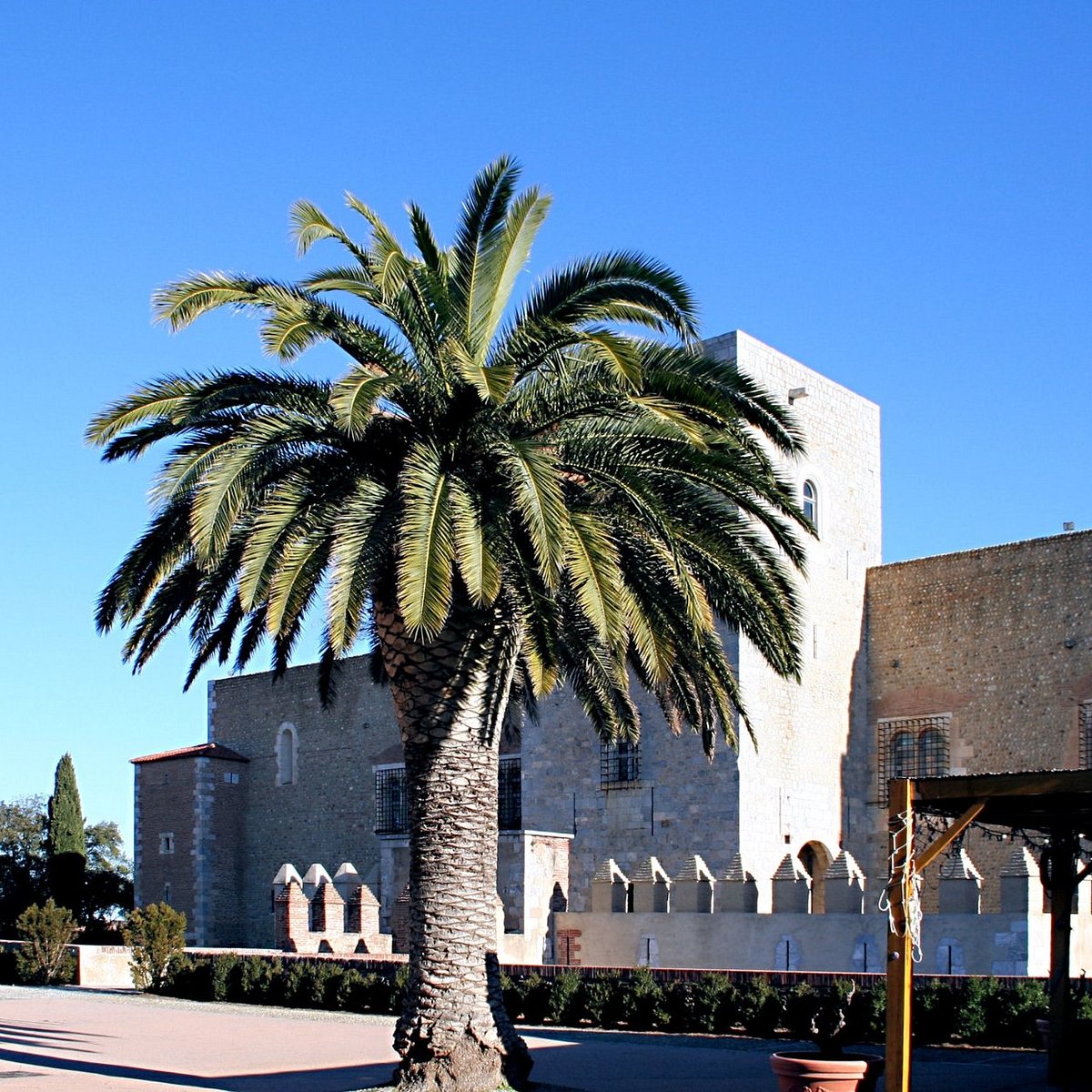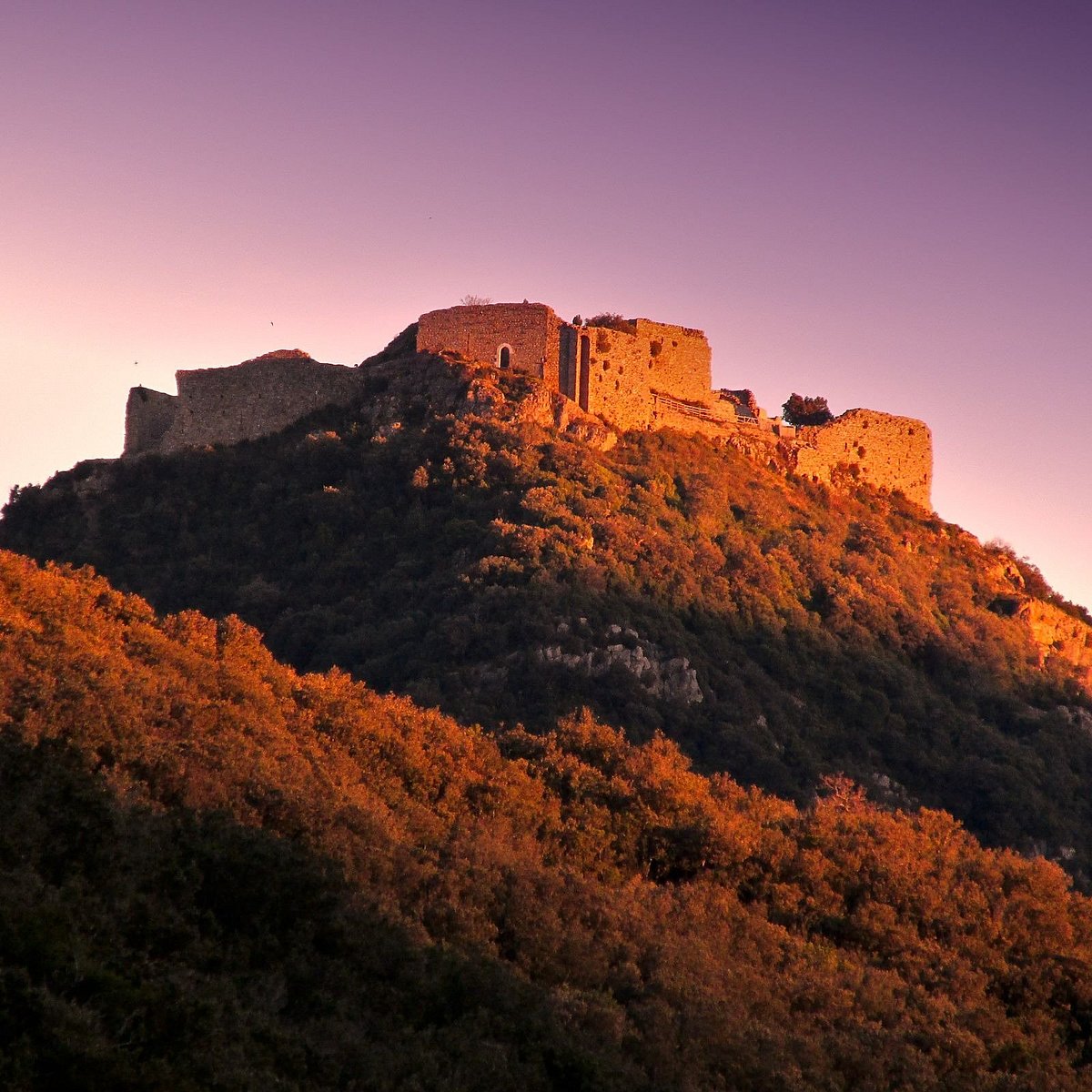Ultimate Chateau Travel Guide for Southern France - 2025

1. Château d'If
Saving Castles Regal Ranking 7/10 👑
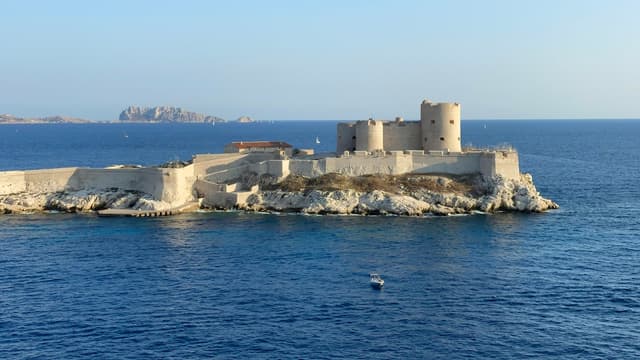
📜 Chateau d'If's History & Visitor Experience:
Château d'If, located on a small island in the Bay of Marseille, France, is a fortress with a rich history and literary fame. Built between 1524 and 1531 under the orders of King Francis I, it was originally designed to defend the coast from invasion. While not a traditional château, If's historical significance, literary connections, and stunning Mediterranean views make it a compelling destination. The boat journey adds to the adventure, offering visitors an unforgettable experience distinct from inland castles.
The château's architecture is a classic example of 16th-century military design, featuring a square plan with three towers. Its imposing stone walls and strategic island location made it an almost impregnable fortress. However, due to its isolation and secure structure, Château d'If soon became more famous as a prison than as a defensive stronghold.
Château d'If gained worldwide renown through Alexandre Dumas' novel "The Count of Monte Cristo," where it serves as the prison for the protagonist Edmond Dantès. Although Dumas' story is fictional, the château did house many famous prisoners throughout its history, including political and religious dissidents. Today, the fortress is a popular tourist attraction, offering visitors a chance to explore its cells, including the supposed cell of the fictional Dantès, and enjoy panoramic views of Marseille and the Mediterranean. The blend of its military architecture, prison history, and literary connections makes Château d'If one of the most intriguing fortresses in France.
🎫 Recommended Tickets & Tours:
🛏️ Lodging Near Chateau d'If:
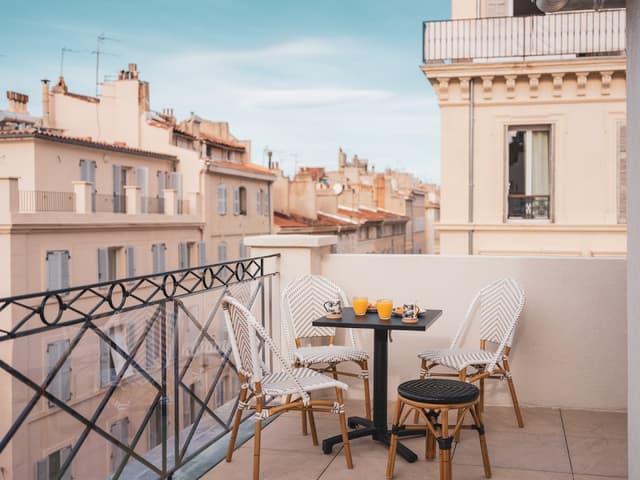
🍽️ Dining Near Chateau d'If:
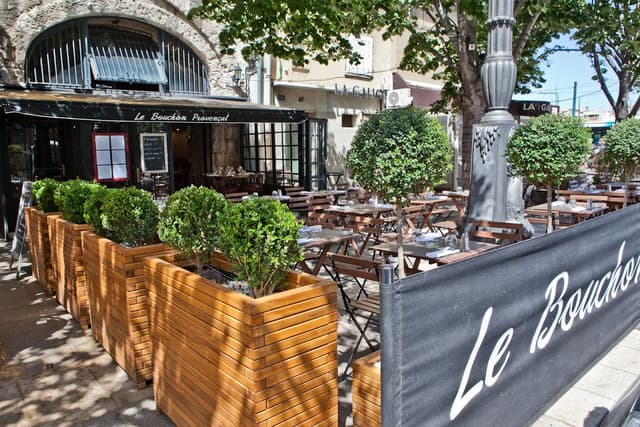
2. Château des Baux-de-Provence
Saving Castles Regal Ranking 7/10 👑
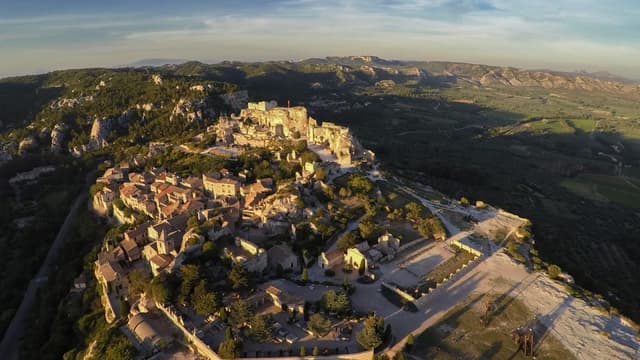
📜 Château des Baux-de-Provence's History & Visitor Experience:
Château des Baux-de-Provence, perched atop a rocky outcrop in the Alpilles mountains of southern France, is one of the most impressive medieval castles in the country. Built between the 11th and 13th centuries, it was once the seat of the powerful Lords of Baux, who claimed descent from the Biblical Magi. While not intact like many châteaux, its rugged beauty, historical significance, and stunning setting make it a unique and memorable castle experience.
The castle's ruins span over 7 hectares, making it one of the largest medieval fortresses in Europe. Its strategic location offered commanding views of the surrounding countryside and made it a formidable defensive stronghold. The castle's architecture blends Romanesque and Gothic styles, with remnants of impressive features such as the keep, chapel, and residential buildings still visible.
Today, Château des Baux-de-Provence is a popular tourist destination, not only for its historical significance and architectural remnants but also for its cultural offerings. The site hosts medieval reenactments, art exhibitions, and a unique attraction called "Carrières de Lumières" in nearby quarries, where immersive art projections are displayed. Visitors can explore the ruins, enjoy panoramic views of the Provençal landscape, and learn about the castle's turbulent history, which includes sieges, wars, and ultimately its destruction in 1632 on the orders of Cardinal Richelieu.
🎫 Recommended Tickets & Tours:
🛏️ Lodging Near Château des Baux-de-Provence:
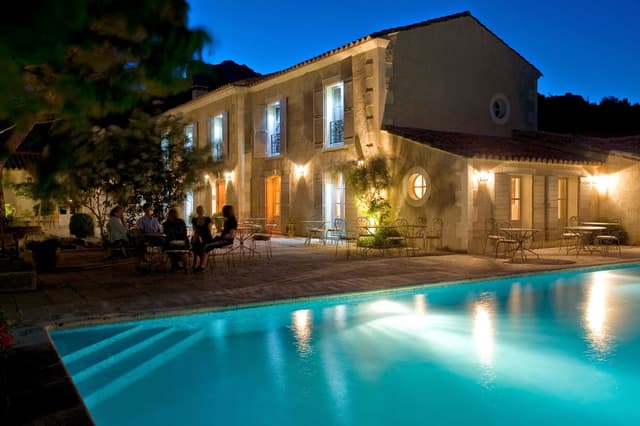
🍽️ Dining Near Château des Baux-de-Provence:
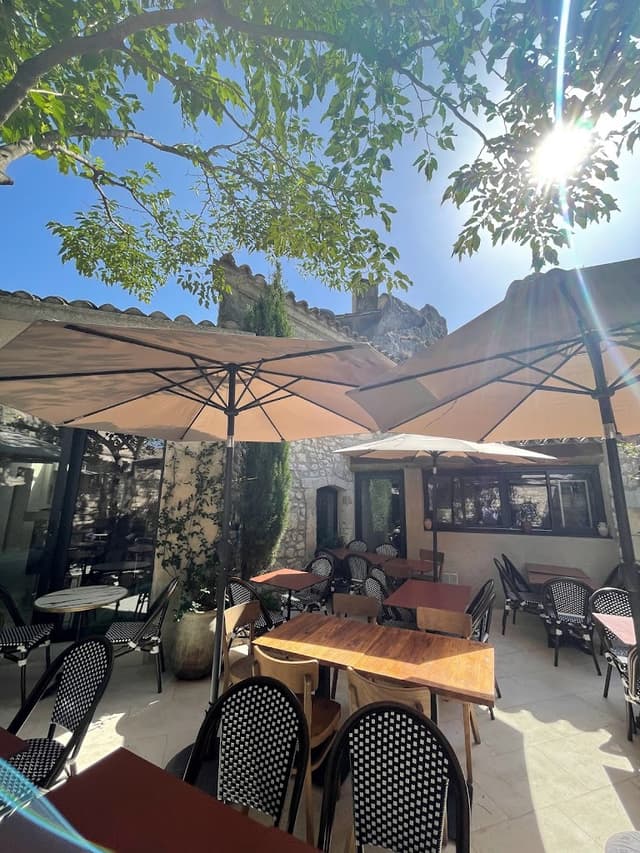
3. Palais des Papes
Saving Castles Regal Ranking 9/10 👑
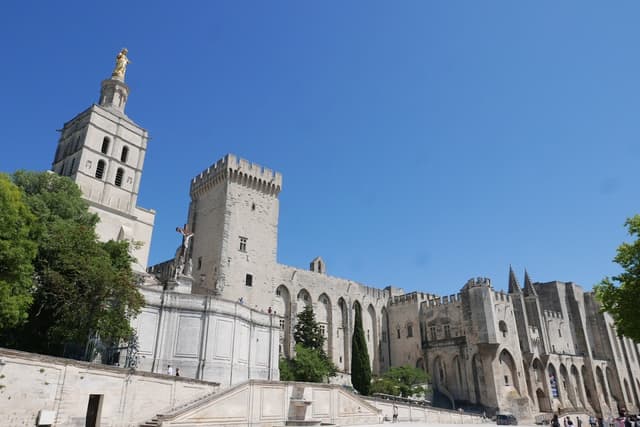
📜 Palais des Papes's History & Visitor Experience:
The Palais des Papes (Palace of the Popes) in Avignon, France, is one of the largest and most important medieval Gothic buildings in Europe. Built in the 14th century, it served as the seat of Western Christianity during the Avignon Papacy from 1309 to 1377, when seven successive popes resided in Avignon rather than Rome. The palace's well-preserved state, extensive tour options, and central location in charming Avignon make it an essential visit. Its blend of religious, political, and architectural importance offers visitors an unmatched glimpse into medieval European history.
The palace is a fortress and a palace, demonstrating the power and wealth of the Church in the Middle Ages. Its architecture is a striking blend of defensive military structure and lavish papal residence. The palace covers 15,000 square meters, making it one of the largest Gothic buildings of the Middle Ages. Its walls, towers, and battlements are up to 17 feet thick, showcasing its defensive capabilities.
Inside, the palace features richly decorated chapels and ceremonial rooms, including the Pope's private apartments with priceless frescoes. The Great Chapel, the Consistory where the Pope met with his cardinals, and the Great Audience Hall are particularly impressive. Today, the Palais des Papes is a UNESCO World Heritage site and one of France's most visited monuments. It hosts art exhibitions, cultural events, and offers visitors a journey through the religious, artistic, and political history of the 14th century, while its imposing structure continues to dominate Avignon's skyline.
🎫 Recommended Tickets & Tours:
🛏️ Lodging Near Palais des Papes:
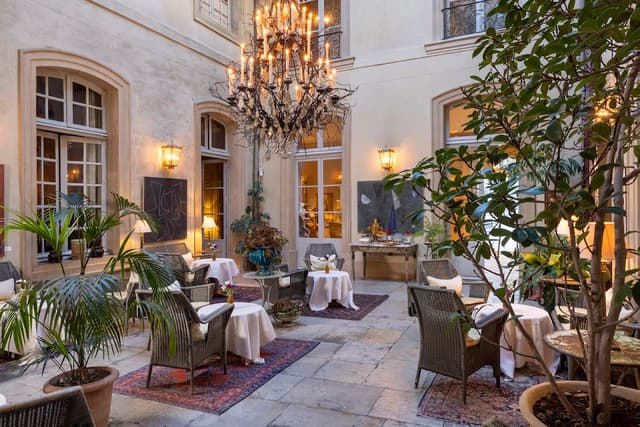
🍽️ Dining Near Palais des Papes:
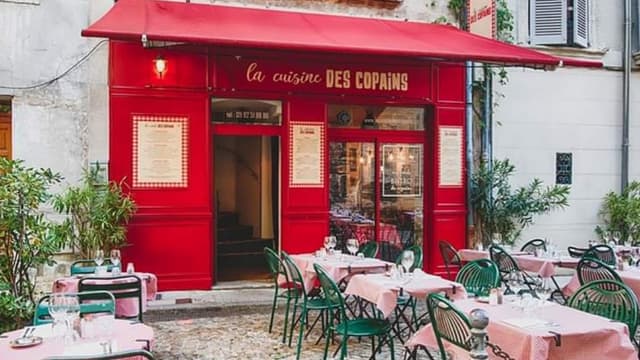
4. Château de Tarascon
Saving Castles Regal Ranking 7/10 👑
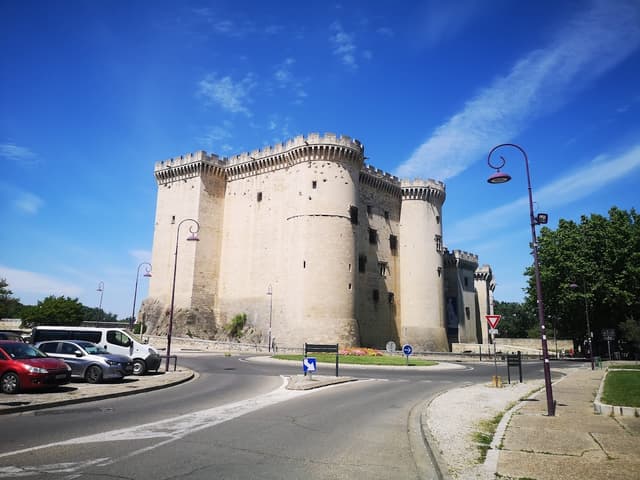
📜 Château de Tarascon's History & Visitor Experience:
Château de Tarascon or Château du Roi René, is an impressive medieval fortress located in the town of Tarascon in southern France. Built in the early 15th century by Louis II of Anjou and completed by his son, René of Anjou, it stands as one of the finest examples of late medieval military architecture in France. While less famous than some Provençal sites, Tarascon's authentic medieval atmosphere and strategic riverside location offer visitors a compelling journey into France's chivalric past.
The castle's most striking feature is its massive, well-preserved exterior. Rising directly from the banks of the Rhône River, its sheer limestone walls create an imposing silhouette. The fortress is remarkably well-preserved, with its original drawbridge, portcullis, and machicolations still intact. Its strategic location made it an important stronghold controlling river traffic between Lyon and the Mediterranean.
Inside, Tarascon Castle offers visitors a glimpse into medieval life, with its great halls, private apartments, and chapels. The castle is known for its beautiful Gothic fireplaces and well-preserved 15th-century frescoes. One of its unique features is the "Heaven and Hell" staircase, decorated with carved figures representing the blessed and the damned. Today, the castle serves as a museum, showcasing medieval architecture, furniture, and tapestries. Its excellent state of preservation and historical significance make Tarascon Castle a must-visit destination for those interested in medieval military architecture and the history of Provence.
🎫 Recommended Tickets & Tours:
🛏️ Lodging Near Château de Tarascon:
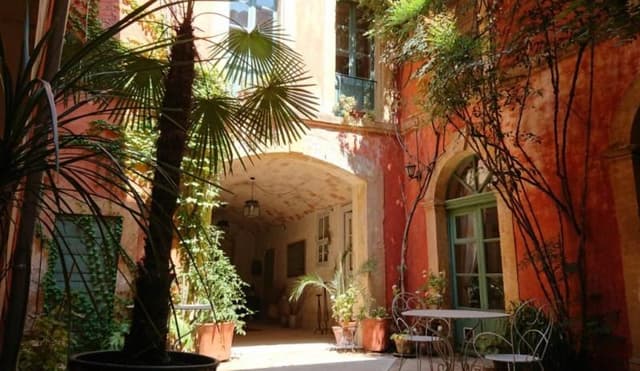
🍽️ Dining Near Château de Tarascon:
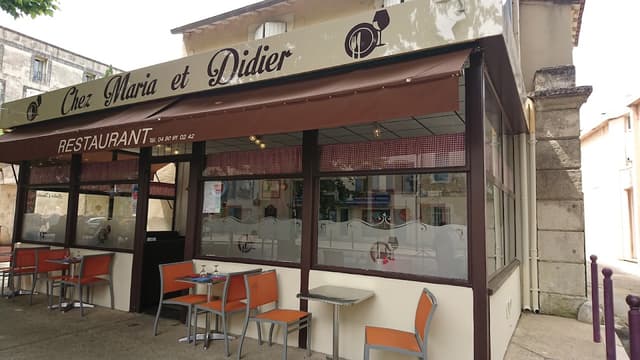
5. Château d'Ansouis
Saving Castles Regal Ranking 6/10 👑
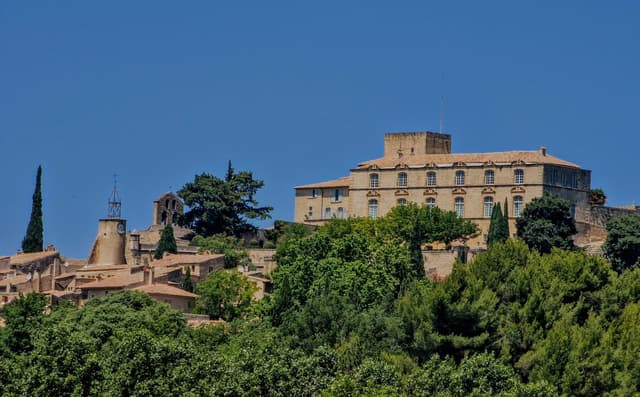
📜 Chateau d'Ansouis's History & Visitor Experience:
Château d'Ansouis, located in the picturesque village of Ansouis in Provence, is a charming blend of medieval fortress and Renaissance palace. Built in the 12th century and modified over subsequent centuries, it offers visitors a journey through different periods of French architectural history. While smaller and less known than some Provençal landmarks, Ansouis offers a serene, authentic castle experience. Its location in a quintessential Provençal village enhances its charm for visitors seeking off-the-beaten-path destinations.
The castle's exterior retains many of its medieval defensive features, including imposing walls and a watchtower, while also showcasing elegant Renaissance windows and decorative elements. This combination creates a visually striking contrast that reflects the château's evolution from a military stronghold to a comfortable noble residence.
Inside, Château d'Ansouis boasts beautifully preserved interiors spanning from the Middle Ages to the 18th century. Visitors can explore richly furnished rooms, including a medieval great hall, Renaissance style bedrooms, and an 18th-century salon. The castle also features a lovely chapel with 16th-century frescoes. Surrounded by terraced gardens offering panoramic views of the Luberon countryside, Château d'Ansouis stands as a well-preserved example of Provençal aristocratic life through the ages, providing an intimate and authentic château experience.
🎫 Recommended Tickets & Tours:
🛏️ Lodging Near Château d'Ansouis:
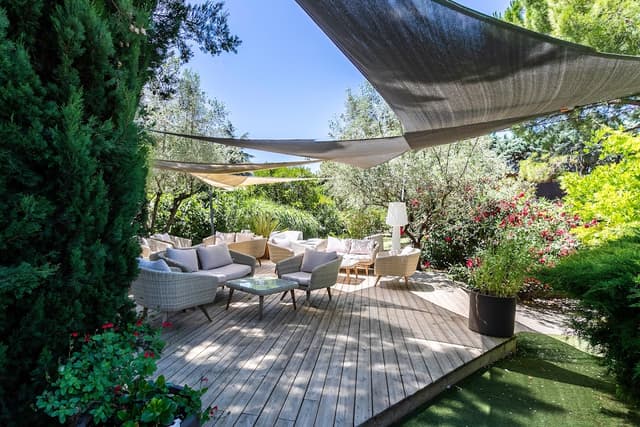
🍽️ Dining Near Château d'Ansouis:
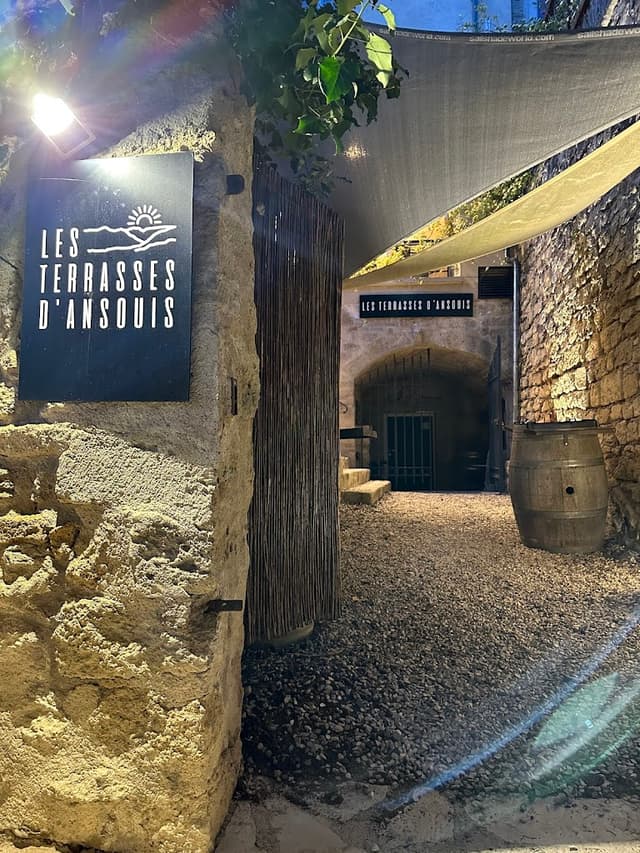
6. Château de Lourmarin
Saving Castles Regal Ranking 6/10 👑
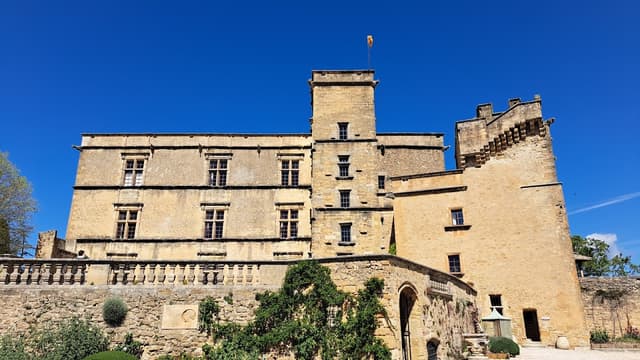
📜 Chateau de Lourmarin's History & Visitor Experience:
Château de Lourmarin, situated in the charming village of Lourmarin in Provence, is a unique blend of medieval fortress and Renaissance palace. Built in two distinct phases, it showcases the evolution of French castle architecture from the 15th to the 16th century. While smaller than some famous castles, Lourmarin's intimate scale, beautiful location, and connection to local culture provide a genuine glimpse into Provençal noble life, making it a delightful discovery for discerning visitors.
The older part of the château, dating from the 15th century, retains features of a medieval stronghold with its robust walls and defensive elements. In contrast, the newer section, constructed in the 16th century, exemplifies the elegance of the Renaissance period with its refined architecture, large windows, and ornate decorations. This juxtaposition offers visitors a visual journey through architectural styles.
Today, Château de Lourmarin serves as a cultural center, hosting art exhibitions, concerts, and literary events. It's particularly known for its connection to Albert Camus, who lived nearby and is buried in the local cemetery. The castle's interior features period furnishings, art collections, and a notable Renaissance staircase. Its picturesque setting in the Luberon region, combined with its architectural and cultural significance, makes Château de Lourmarin a captivating destination that embodies the charm and history of Provence.
🎫 Recommended Tickets & Tours:
🛏️ Lodging Near Chateau de Lourmarin:
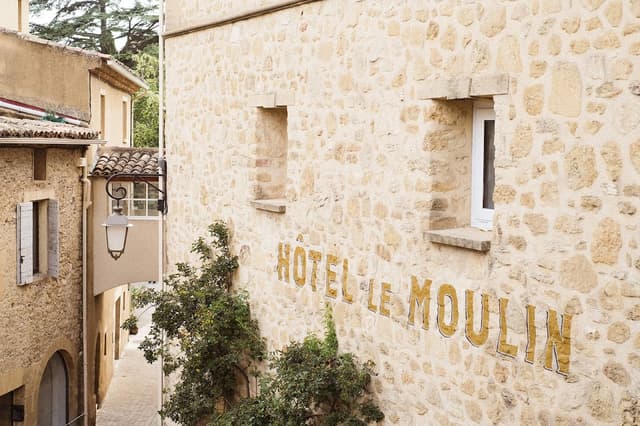
🍽️ Dining Near Chateau de Lourmarin:
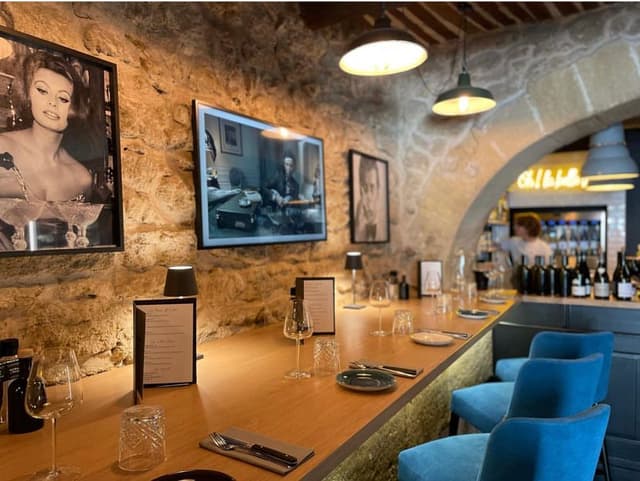
7. Château de Grignan
Saving Castles Regal Ranking 7/10 👑
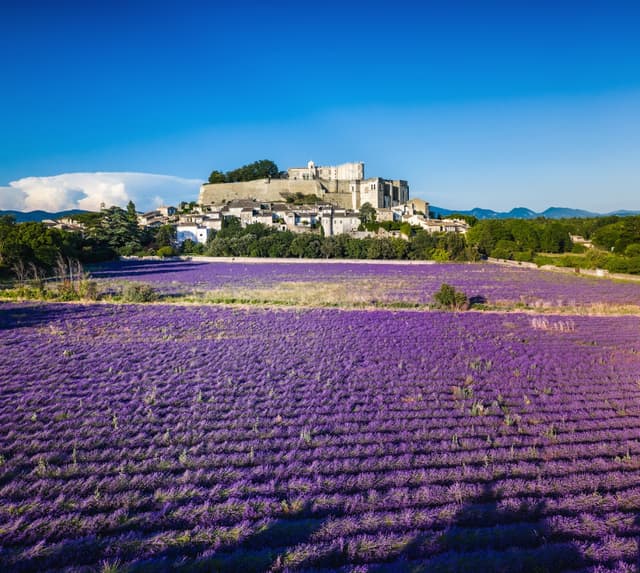
📜 Château de Grignan's History & Visitor Experience:
Château de Grignan, perched atop a hill in the Drôme department of southeastern France, is a remarkable example of Renaissance architecture with medieval roots. Originally built in the 12th century, it reached its architectural zenith in the 16th and 17th centuries, becoming one of the most impressive Renaissance castles in southeastern France.
The château is famous for its association with Madame de Sévigné, the renowned 17th-century letter writer, whose daughter lived there. This connection has imbued the castle with a rich literary heritage. Architecturally, the château showcases a harmonious blend of medieval fortifications and Renaissance elegance. Its imposing façade, adorned with large windows and ornate decorations, offers panoramic views of the surrounding Provençal landscape.
Inside, visitors can explore lavishly decorated rooms that reflect the castle's golden age, including the Kings' Room, the Madame de Sévigné Room, and the impressive Salle des États with its painted ceiling. The castle also houses a museum dedicated to Madame de Sévigné and the art of letter writing. Today, Château de Grignan not only serves as a historical monument but also as a cultural center, hosting theatrical performances and festivals, particularly during the summer months. Its blend of architectural grandeur, literary history, and cultural significance makes it a must-visit destination in the region.
🎫 Recommended Tickets & Tours:
🛏️ Lodging Near Château de Grignan:
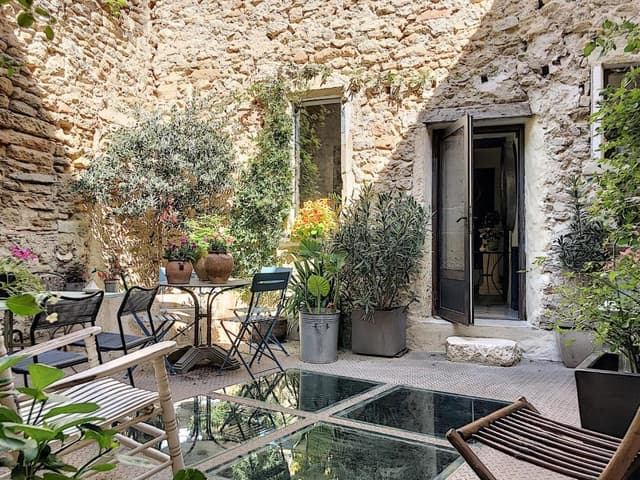
🍽️ Dining Near Château de Grignan:
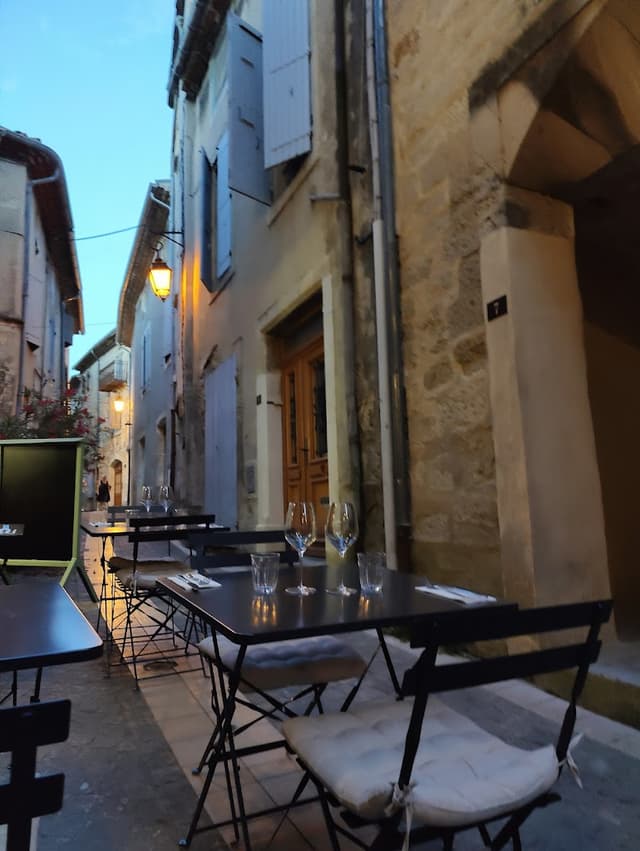
8. Château de Suze-la-Rousse
Saving Castles Regal Ranking 6/10 👑
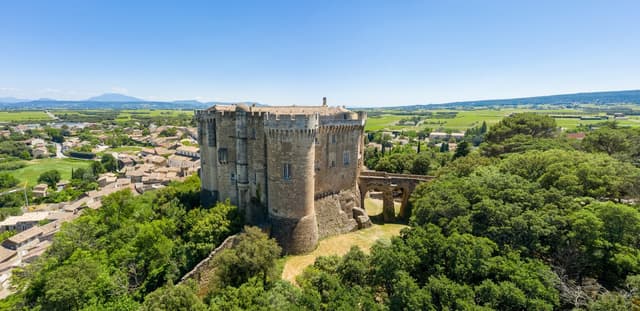
📜 Château de Suze-la-Rousse's History & Visitor Experience:
Château de Suze-la-Rousse, located in the Drôme department of southeastern France, is an impressive fortress that showcases the evolution of castle architecture from the Middle Ages to the Renaissance. Originally built in the 12th century, it was significantly expanded and renovated in the 16th century, resulting in a unique blend of medieval military architecture and Renaissance elegance.
The castle's most striking features include its massive square keep, dating from the 12th century, and its Renaissance courtyard, adorned with elegant arcades and ornate sculptures. The fortress maintains many of its original defensive elements, such as machicolations and arrow slits, while also incorporating large windows and decorative elements typical of the Renaissance period.
Today, the Castle of Suze-la-Rousse houses the University of Wine, an educational institution dedicated to viticulture and oenology. This unique repurposing reflects the castle's location in the heart of one of France's renowned wine regions. Visitors can explore the castle's impressive architecture, learn about its history, and enjoy panoramic views of the surrounding vineyards from its ramparts. The combination of medieval fortifications, Renaissance refinement, and its current role in wine education makes the Castle of Suze-la-Rousse a fascinating destination that bridges centuries of French history and culture.
🎫 Recommended Tickets & Tours:
🛏️ Lodging Near Château de Suze-la-Rousse:
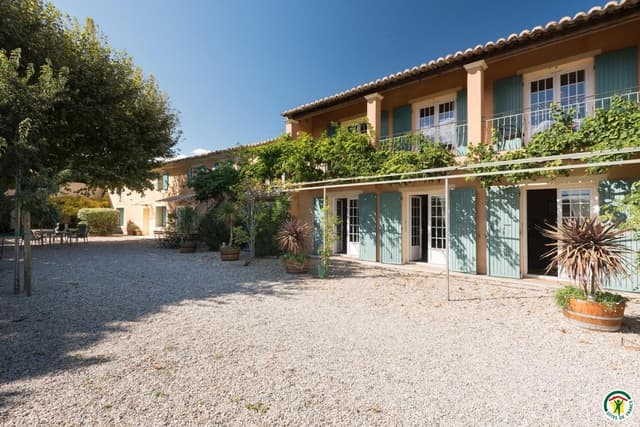
🍽️ Dining Near Château de Suze-la-Rousse:
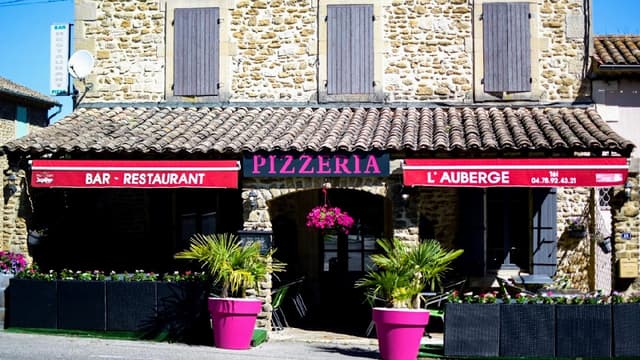
9. Villa Ephrussi de Rothchild
Saving Castles Regal Ranking 8/10 👑
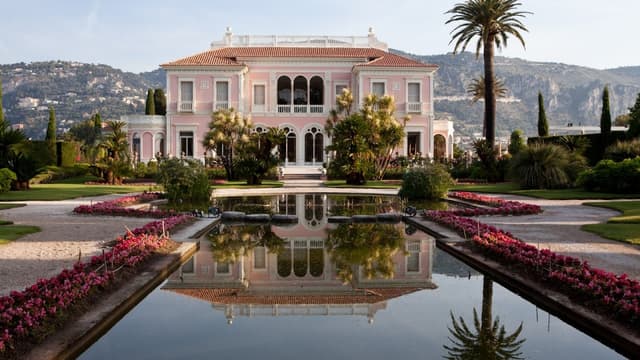
📜 Villa Ephrussi de Rothchild's History & Visitor Experience:
Villa Ephrussi de Rothschild, also known as Villa Île-de-France, is a remarkable early 20th-century mansion located on the French Riviera, in the town of Saint-Jean-Cap-Ferrat. Built between 1905 and 1912 for Baroness Béatrice de Rothschild, it is a stunning example of Belle Époque architecture and design.
The villa's architecture is a unique blend of various styles, including Italian Renaissance, Spanish, and French, creating a harmonious and opulent ensemble. Its distinctive pink façade and ornate design make it stand out against the backdrop of the Mediterranean Sea. The interior of the villa is equally impressive, featuring a collection of rare porcelain, Old Master paintings, and fine furniture from the 15th to 19th centuries.
Perhaps the most striking feature of Villa Ephrussi de Rothschild is its nine themed gardens. These include French, Spanish, Florentine, Japanese, exotic, stone, and rose gardens, among others. The centerpiece is a magnificent musical fountain that performs water displays set to classical music. Today, the villa and its gardens are open to the public as a museum, offering visitors a glimpse into the luxurious lifestyle of the Belle Époque era while providing breathtaking views of the French Riviera. The combination of its architectural beauty, art collections, and spectacular gardens makes Villa Ephrussi de Rothschild one of the most enchanting attractions on the Côte d'Azur.
🎫 Recommended Tickets & Tours:
🛏️ Lodging Near Villa Ephrussi de Rothchild:
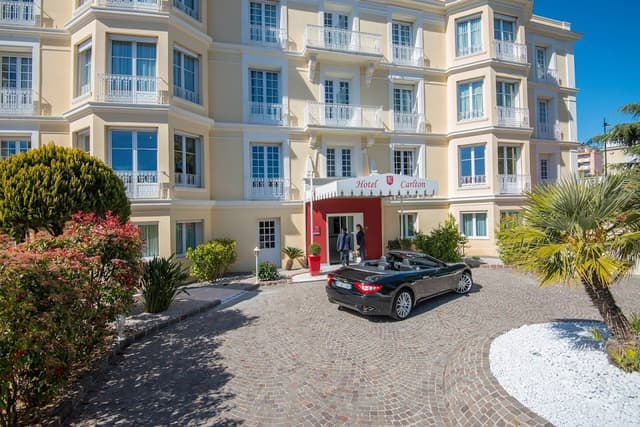
🍽️ Dining Near Villa Ephrussi de Rothchild:
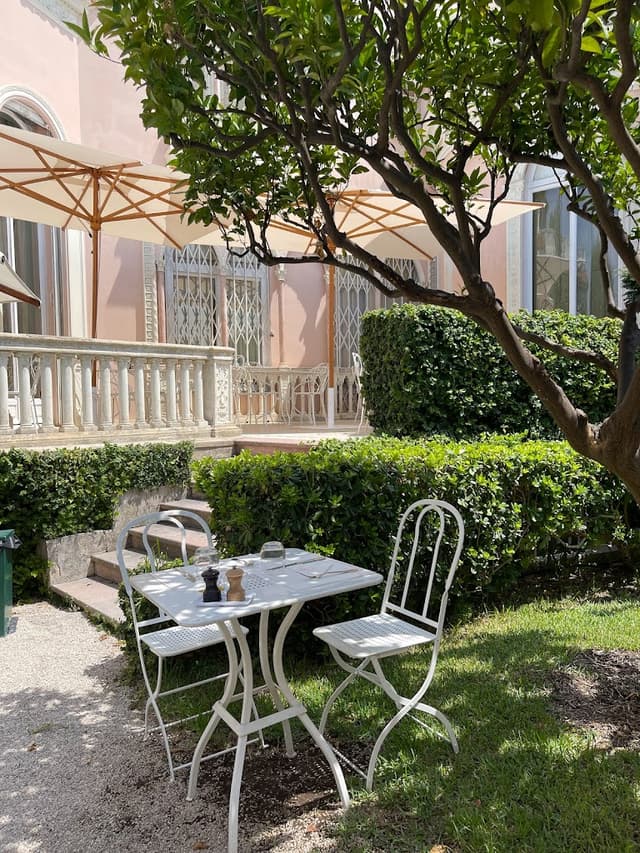
10. Château de la Napoule
Saving Castles Regal Ranking 6/10 👑
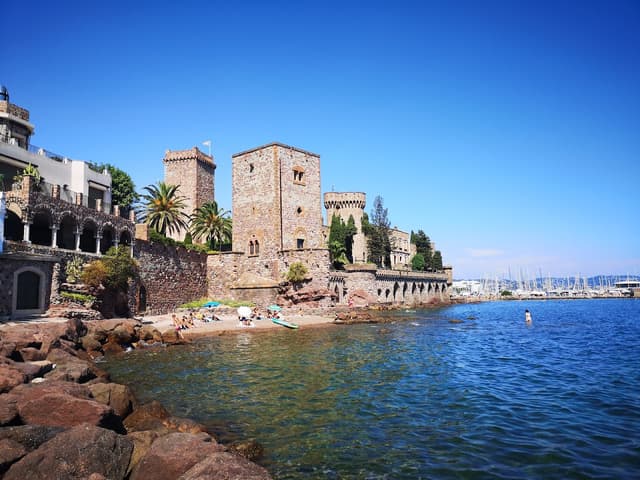
📜 Château de la Napoule's History & Visitor Experience:
Château de la Napoule, located on the French Riviera in the town of Mandelieu-la-Napoule, is a remarkable castle with a history spanning from the 14th century to the modern era. Its current form is largely the result of extensive renovation and artistic reimagining in the early 20th century by American artists Henry and Marie Clews.
Originally built as a medieval fortress in the 14th century, the château was almost completely destroyed during the French Revolution. In 1918, Henry and Marie Clews purchased the ruins and spent the next 17 years restoring and reimagining the castle. Their work blended medieval architecture with whimsical and eclectic elements, creating a unique artistic vision.
The castle features sculptural works by Henry Clews throughout its structure and gardens, giving it a distinctly personal and artistic character. Notable elements include the "Tower of La Mancha," decorated with sculptures inspired by Don Quixote, and the beautifully landscaped gardens that open onto the Mediterranean Sea. Today, Château de la Napoule serves as a cultural center and museum, hosting art exhibitions, concerts, and educational programs. Its blend of medieval history, 20th-century artistic vision, and stunning coastal setting makes it a unique and captivating destination on the French Riviera.
🎫 Recommended Tickets & Tours:
🛏️ Lodging Near Château de la Napoule:
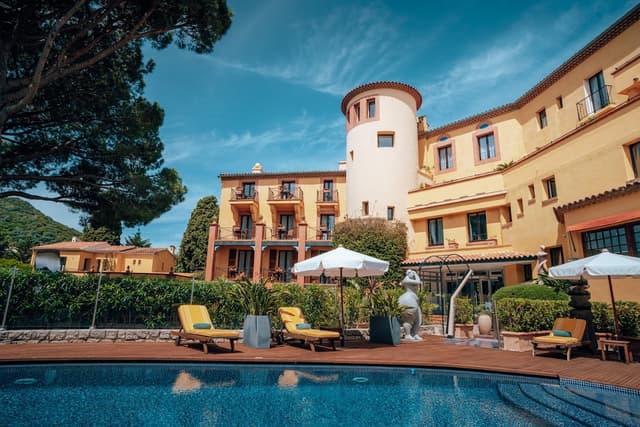
🍽️ Dining Near Château de la Napoule:
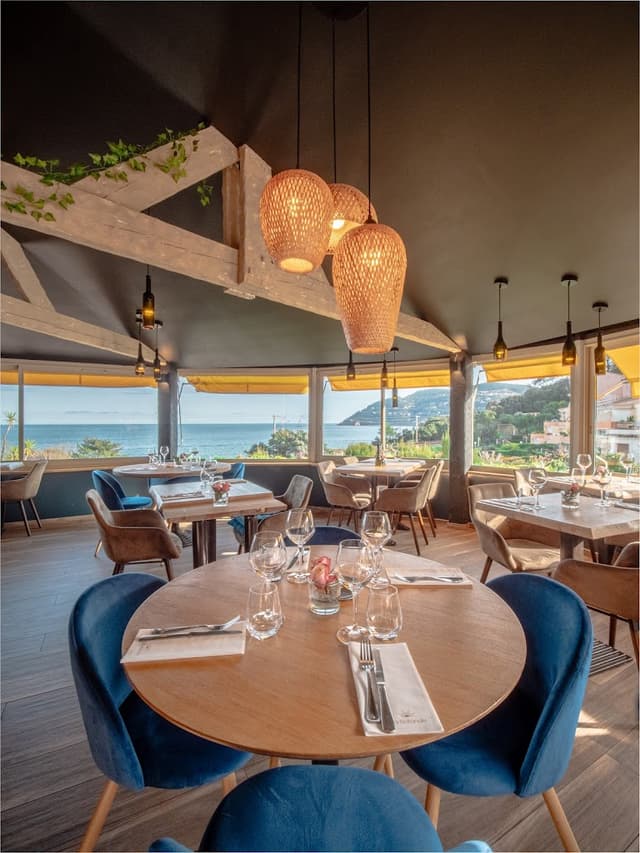
11. Château de Simiane
Saving Castles Regal Ranking 7/10 👑
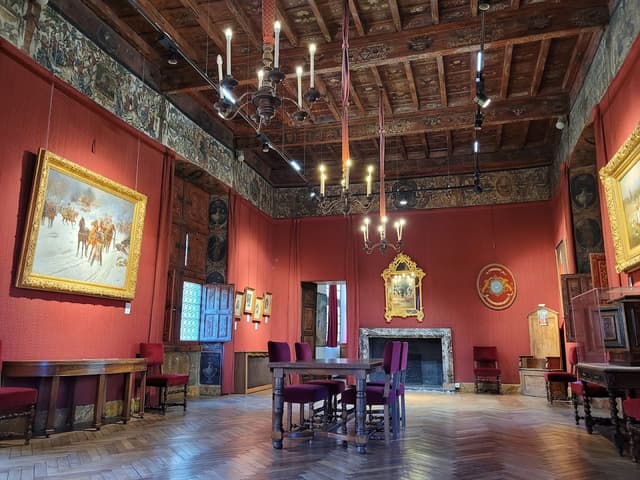
📜 Château de Simiane's History & Visitor Experience:
Château de Simiane, located in the village of Simiane-la-Rotonde in Provence, France, is a unique and well-preserved example of Romanesque architecture. Built in the late 12th and early 13th centuries, it stands out for its distinctive rotunda, which gives the village part of its name.
The château's most remarkable feature is its circular great hall, known as the Rotonde. This rare architectural element is topped by a domed roof supported by twelve arches, creating an impressive and harmonious space. The Rotonde is considered one of the finest examples of Romanesque civil architecture in Provence.
Today, Château de Simiane serves as a cultural center, hosting concerts, exhibitions, and other events, particularly during the summer months. Visitors can explore the Rotonde, climb to the top of the keep for panoramic views of the Provençal landscape, and wander through the medieval village that surrounds the castle. The château's well-preserved state and unique architecture, combined with its picturesque setting in the Luberon region, make it a fascinating destination for those interested in medieval history and Romanesque architecture.
🎫 Recommended Tickets & Tours:
🛏️ Lodging Near Château de Simiane:
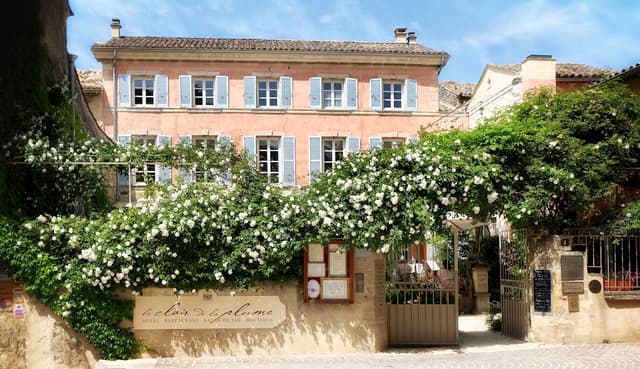
🍽️ Dining Near Château de Simiane:
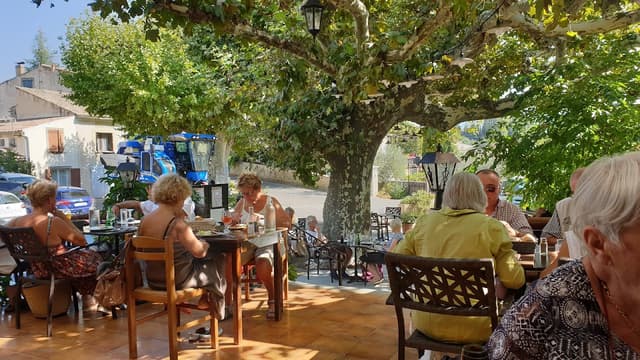
12. Château de Montjoie
Saving Castles Regal Ranking 6/10 👑
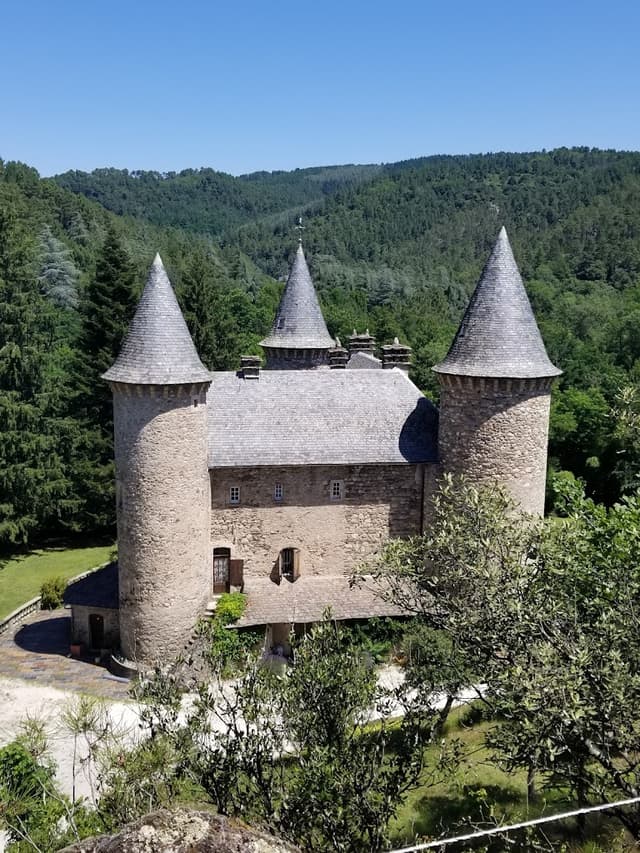
📜 Château de Montjoie's History & Visitor Experience:
Château de Montjoie, located in the Occitanie region of southern France, is a lesser-known but charming example of medieval architecture. Built in the 13th century, it stands as a testament to the region's rich history and the evolution of castle design.
The château is characterized by its sturdy stone construction and defensive features typical of medieval fortifications. Its strategic hilltop position offered commanding views of the surrounding countryside, crucial for its original purpose as a defensive stronghold. The castle's architecture includes elements such as thick walls, narrow windows, and a central keep, reflecting the military needs of the time.
Today, Château de Montjoie is privately owned but occasionally open to the public for guided tours. While not as grand or well-known as some of France's more famous castles, it offers visitors an authentic and intimate glimpse into medieval life and architecture. The castle's relatively untouched state and rural setting provide a unique opportunity to experience a slice of French history away from more touristy locations. Its preservation efforts highlight the importance of maintaining these lesser-known historical sites as part of France's rich cultural heritage.
🛏️ Lodging Near Château de Montjoie:
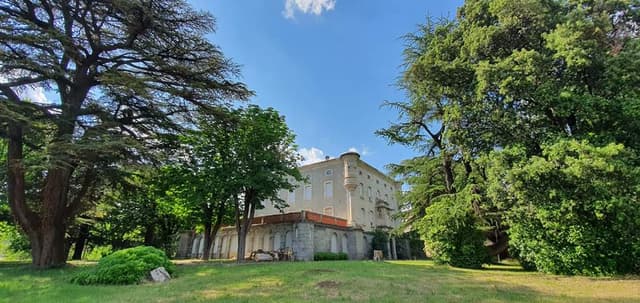
🍽️ Dining Near Château de Montjoie:
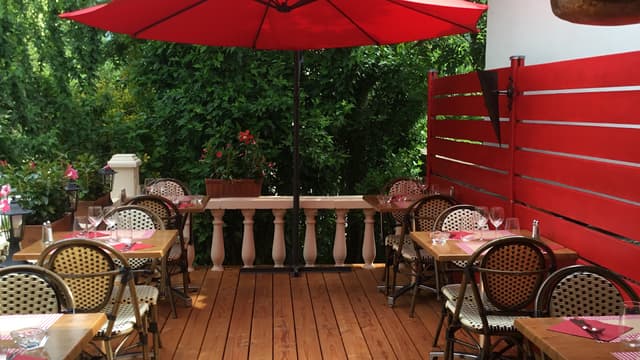
13. Cite de Carcassonne
Saving Castles Regal Ranking 10/10 👑
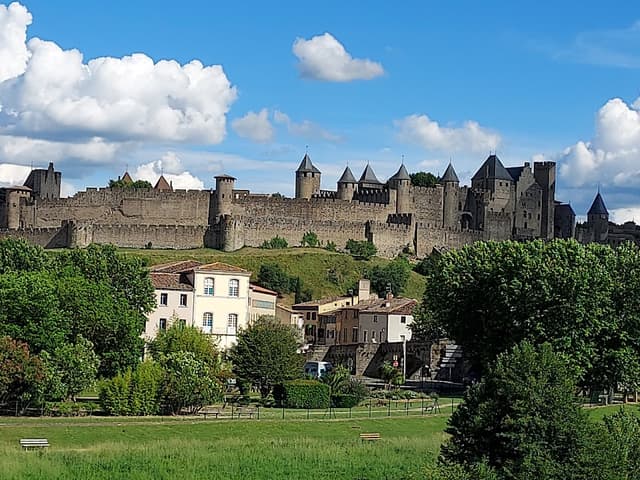
📜 Cite de Carcassonne's History & Visitor Experience:
Cité de Carcassonne, located in the Languedoc region of France, is an extraordinary medieval fortress and a UNESCO World Heritage Site. Known for its massive double-walled fortifications, impressive towers, and rich history dating back to Roman times, it is one of Europe's most iconic castles. The visitor experience is exceptional, with extensive guided tours, historical exhibits, and immersive medieval events. Accessibility is excellent, making it a must-visit destination for history enthusiasts and those fascinated by medieval architecture and culture.
Originally founded by the Romans, the fortified city reached its peak during the Middle Ages and was extensively restored in the 19th century by architect Eugène Viollet-le-Duc.
Its massive fortifications consist of two outer walls with 53 towers and barbicans to prevent attack by siege engines. The castle itself, known as the Château Comtal, sits within the inner ramparts. This double-wall defense system, spanning nearly 2 miles in length, is an exceptional example of medieval military architecture. The walls offer visitors a chance to walk in the footsteps of ancient sentries, with stunning views of the surrounding landscape.
Inside the walls, the Cité is a living museum of medieval life, with winding cobblestone streets, Gothic and Romanesque architecture, and the stunning Basilica of Saints Nazarius and Celsus. The Cité is not just a historical monument but a thriving small town, filled with restaurants, shops, and hotels. Its impressive state of preservation and historical significance have earned it UNESCO World Heritage status. The Cité de Carcassonne offers visitors an unparalleled opportunity to immerse themselves in medieval history and architecture, making it one of France's most popular tourist destinations.
🎫 Recommended Tickets & Tours:
🛏️ Lodging Near Cite de Carcassonne:
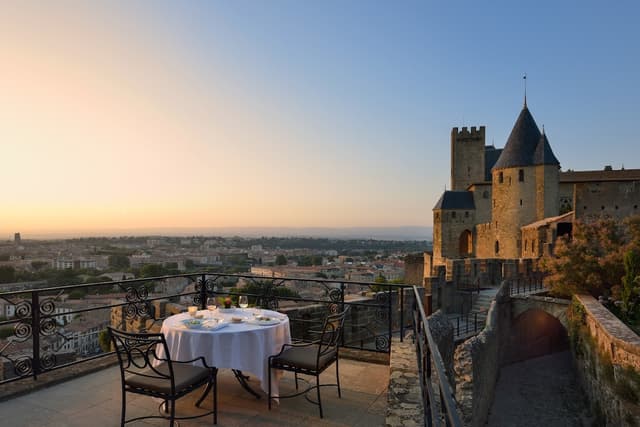
🍽️ Dining Near Cite de Carcassonne:
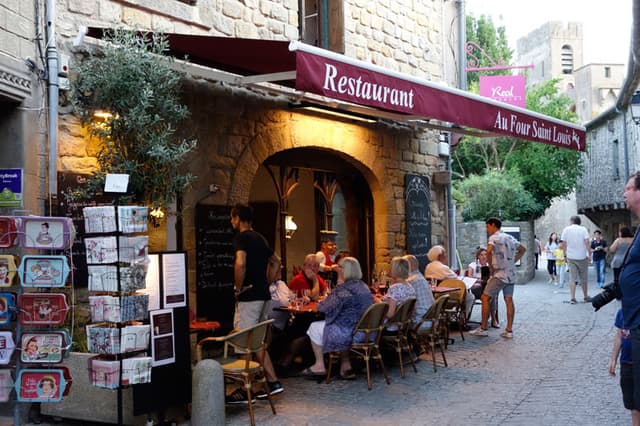
14. Château de Peyrepertuse
Saving Castles Regal Ranking 8/10 👑
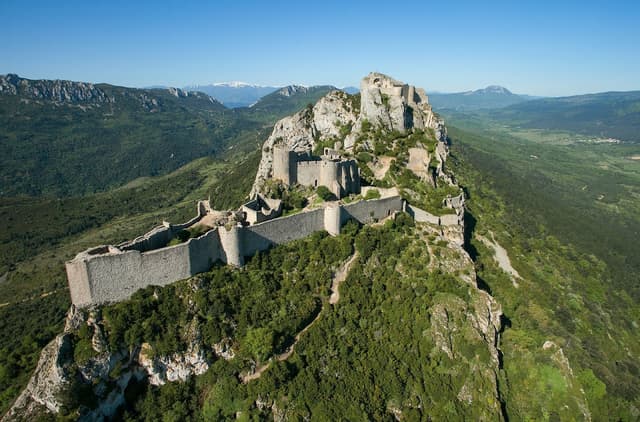
📜 Château de Peyrepertuse's History & Visitor Experience:
Château de Peyrepertuse, located in the Aude department of France, is a stunning example of a Cathar castle, perched dramatically on a cliff. Its origins date back to the 11th century, and it offers breathtaking views of the surrounding landscape. The well-preserved ruins and strategic location provide a fascinating glimpse into medieval military architecture. Visitor experience is enhanced by informative tours and the natural beauty of the site. Accessibility can be challenging due to its rugged location, but it is a rewarding destination for history and adventure enthusiasts.
The castle's most striking feature is its dramatic setting, built directly into the rocky cliffs at an altitude of 800 meters. Its architecture seamlessly integrates with the natural landscape, making it appear as an extension of the mountain itself. The fortress is actually composed of two castles: the lower and older part, and the higher section known as Sant Jordi, connected by a staircase carved into the rock.
Today, Château de Peyrepertuse is a popular tourist destination, offering visitors breathtaking views of the Pyrenees and the surrounding countryside. Its well-preserved ruins allow visitors to explore various elements of medieval military architecture, including towers, ramparts, and a chapel. The castle's remote location and rugged terrain add to its mystique, providing a visceral connection to the turbulent history of the Cathar period. Peyrepertuse's combination of stunning natural setting and historical significance makes it one of the most impressive and evocative castle ruins in France.
🎫 Recommended Tickets & Tours:
🛏️ Lodging Near Château de Peyrepertuse:
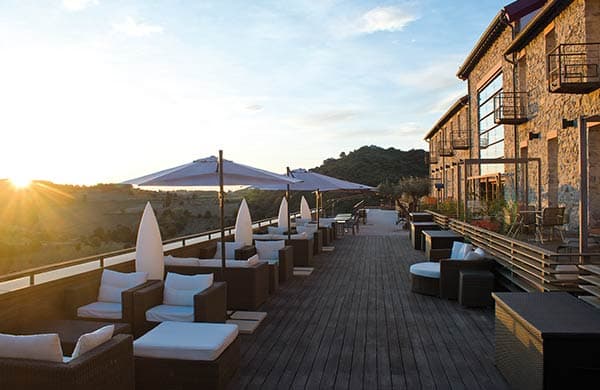
🍽️ Dining Near Château de Peyrepertuse:
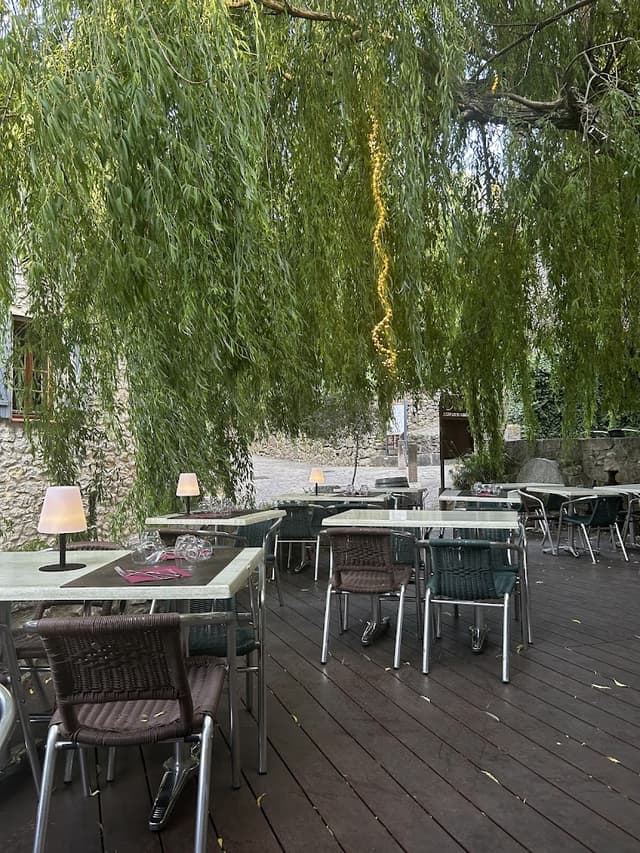
15. Château Gaillac
Saving Castles Regal Ranking 6/10 👑
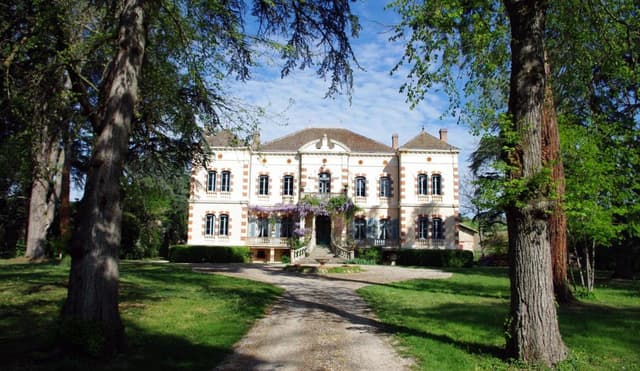
📜 Château Gaillac's History & Visitor Experience:
Château Gaillac, situated in the historic town of Gaillac in southwestern France, is primarily known for its role in the renowned Gaillac wine region rather than as a historical fortress. The estate is part of the Gaillac Appellation d'Origine Contrôlée (AOC), one of the oldest wine-producing areas in France with a history dating back to Roman times. The visitor experience includes guided tours and pleasant surroundings, though facilities and exhibits are limited. Accessibility is good, making it a suitable destination for those interested in regional history and a quieter, more relaxed visit.
Typical of wine châteaux in the region, Château Gaillac likely combines elements of traditional French architecture with modern wine production facilities. This usually includes surrounding vineyards, wine cellars for aging, and tasting rooms for visitors. The estate produces a variety of wines, showcasing the diverse grape varieties of the Gaillac region, including local specialties like Mauzac and Len de l'El for whites, and Duras and Braucol for reds.
While not a medieval castle in the traditional sense, Château Gaillac represents an important aspect of French cultural heritage through its contribution to the country's esteemed wine industry. Visitors to the region can often tour such wine châteaux, gaining insight into wine production processes and the rich history of winemaking in the area.
🍽️ Dining Near Château Gaillac:
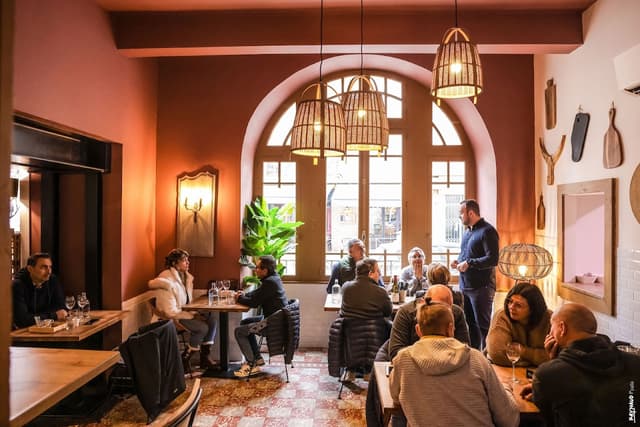
16. Château de Castelnaud
Saving Castles Regal Ranking 9/10 👑
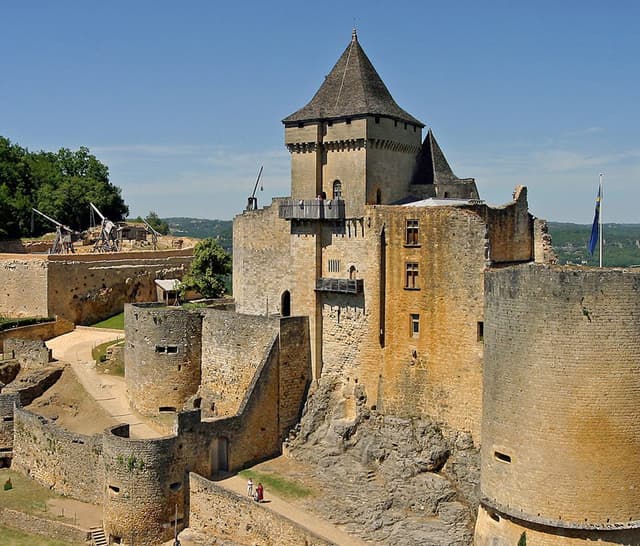
📜 Château de Castelnaud's History & Visitor Experience:
Château de Castelnaud, located in the Dordogne region of France, is a stunning medieval fortress with a rich history dating back to the 12th century. Known for its well-preserved architecture and impressive collection of medieval weaponry and armor, it offers a comprehensive look into medieval warfare. The visitor experience is outstanding, with interactive exhibits, guided tours, and breathtaking views of the Dordogne Valley. Accessibility is good, making it a top destination for history enthusiasts and those interested in medieval military architecture.
The castle has a long history of military conflict, having been involved in the Hundred Years’ War between England and France in the 14th and 15th centuries. Originally constructed as a stronghold during the turbulent period of the Albigensian Crusade, the castle was built by Bernard de Casnac, a staunch Cathar supporter. The medieval fortress changed hands multiple times, reflecting the shifting political landscape of the region. It endured significant damage and reconstruction during the Hundred Years' War, eventually falling under English control before being recaptured by the French.
In the centuries that followed, Château de Castelnaud saw periods of neglect and restoration, most notably during the French Wars of Religion in the 16th century. By the 18th century, the castle was abandoned and fell into ruin. It wasn't until the 20th century that efforts to restore the castle to its former glory began. Today, Château de Castelnaud stands as a well-preserved museum dedicated to medieval warfare, showcasing an extensive collection of weapons and armor, and offering visitors a vivid glimpse into the martial history of the Middle Ages.
🎫 Recommended Tickets & Tours:
🛏️ Lodging Near Château de Castelnaud:
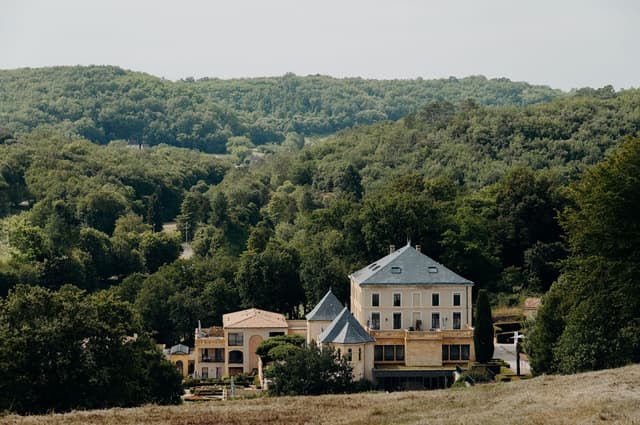
🍽️ Dining Near Château de Castelnaud:

17. Château de Foix
Saving Castles Regal Ranking 8/10 👑
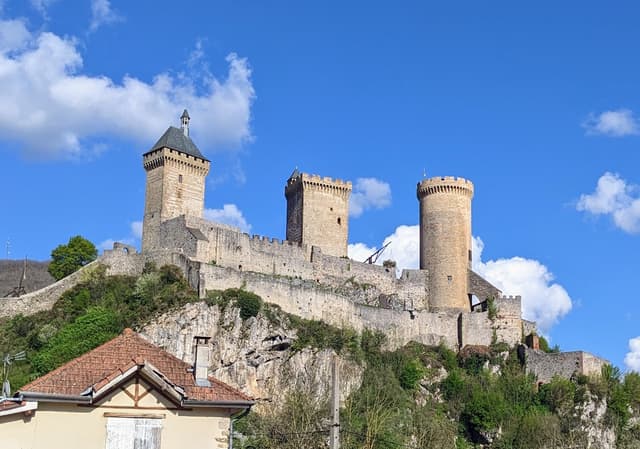
📜Château de Foix's History & Visitor Experience:
Château de Foix, commonly known as Foix Castle, is an imposing medieval fortress perched atop a rocky hill overlooking the town of Foix in the Ariège department of southwestern France. Built in the 10th century, it played a significant role in the region's history, particularly during the Cathar conflicts and the Hundred Years' War. The visitor experience is excellent, with informative exhibits, guided tours, and stunning views of the surrounding area. Accessibility is good, though the climb to the castle can be steep, making it a rewarding destination for history and architecture enthusiasts.
The castle's most striking feature is its three distinctive square towers, which dominate the skyline and offer panoramic views of the Pyrenees foothills. Two of these towers date from the 14th century, while the tallest, known as the "Great Tower," was added in the 15th century. The castle's architecture showcases the evolution of medieval military design, with its thick walls, narrow windows, and strategic hilltop position.
Today, Foix Castle houses a museum dedicated to the history of the Ariège region, featuring exhibits on medieval life, the Cathars, and the Counts of Foix. Visitors can explore the restored rooms, climb the towers, and experience interactive displays that bring the castle's rich history to life. Its dramatic setting and well-preserved state make Château de Foix one of the most impressive and popular castles in southern France, offering a vivid glimpse into medieval warfare and nobility.
🎫 Recommended Tickets & Tours:
🛏️ Lodging Near Château de Foix:
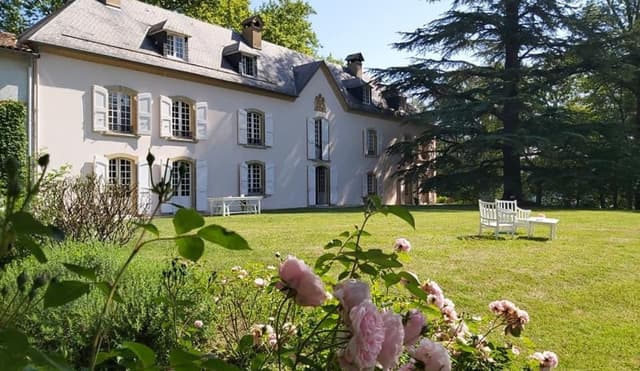
🍽️ Dining Near Château de Foix:
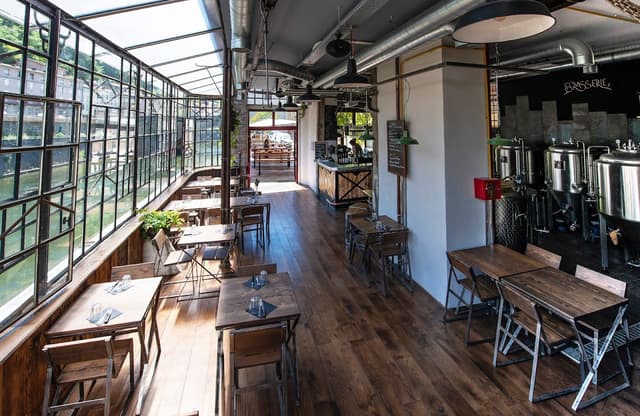
18. Château Comtal
Saving Castles Regal Ranking 9/10 👑
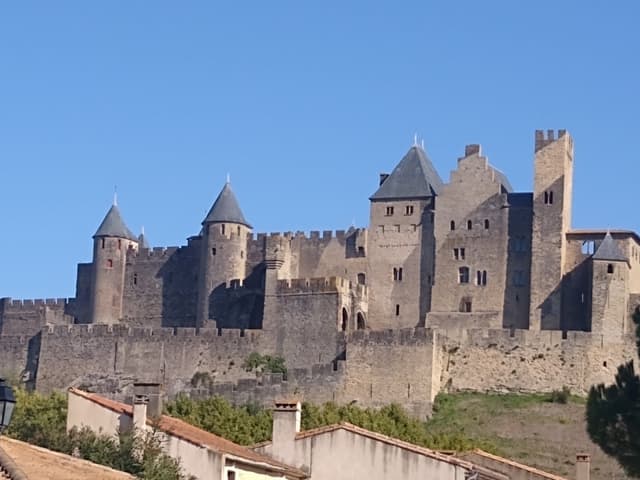
📜Château Comtal's History & Visitor Experience:
Château Comtal, also known as the Counts' Castle, is a significant medieval fortress located within the walled city of Carcassonne in southern France. Built in the 12th century, it served as the seat of power for the Viscounts of Carcassonne and later the Kings of France. The visitor experience is exceptional, with extensive guided tours, historical exhibits, and breathtaking views of the surrounding fortified city. Accessibility is excellent, making it a premier destination for history enthusiasts and admirers of medieval architecture.
The castle is an excellent example of medieval military architecture, featuring thick walls, towers, and a double line of fortifications. Its design reflects the defensive needs of the era, with elements such as arrow slits, machicolations, and a dry moat. The castle's interior includes a museum showcasing archaeological finds and explaining the history and restoration of Carcassonne.
Château Comtal is integral to the UNESCO World Heritage site of the Historic Fortified City of Carcassonne. Visitors can explore the castle's ramparts, offering panoramic views of the city and surrounding landscape. The castle's preservation and its context within the larger fortified city make it a premier destination for those interested in medieval history and architecture.
🎫 Recommended Tickets & Tours:
🛏️ Lodging Near Château Comtal:
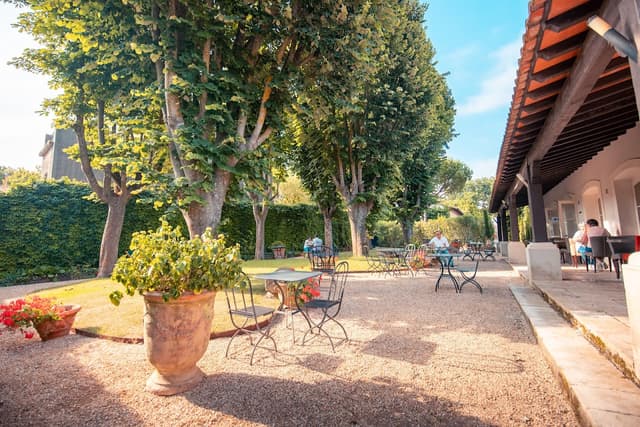
🍽️ Dining Near Château Comtal:
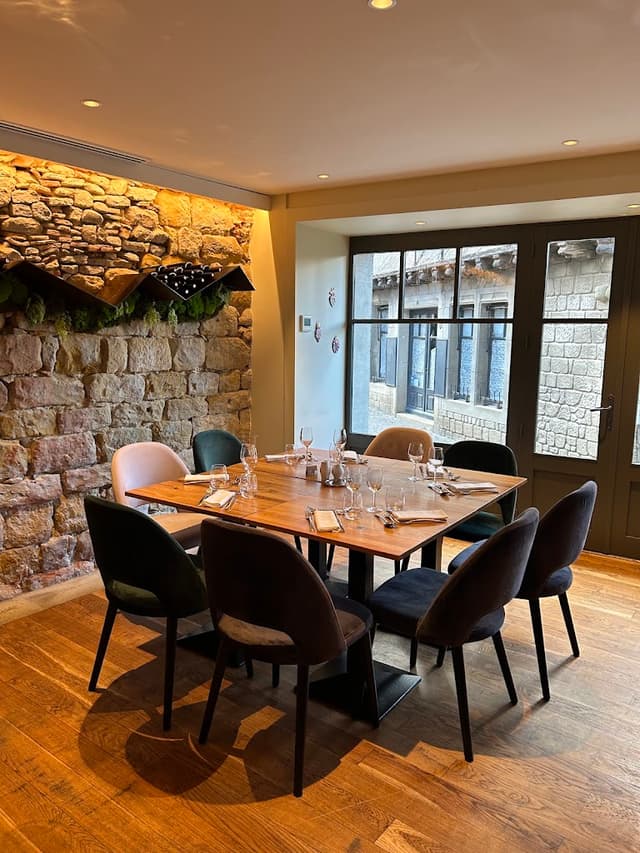
19. Château de Beynac
Saving Castles Regal Ranking 9/10 👑
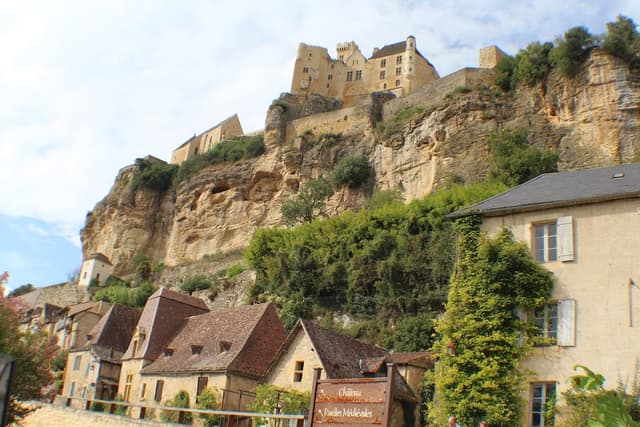
📜Château de Beynac's History & Visitor Experience:
Château de Beynac, located in the Dordogne region of France, is a magnificent medieval fortress with origins in the 12th century. Its strategic position on a cliff overlooking the Dordogne River offers breathtaking views and a glimpse into its historical significance in the Hundred Years' War. The castle features well-preserved interiors, impressive fortifications, and informative exhibits.
Visitor experience is enhanced by guided tours and the stunning scenery. Accessibility is reasonable, though the steep approach may be challenging, making it a premier destination for history and architecture enthusiasts.
In the 17th century, after the conclusion of the religious wars and the relative stabilization of the region, Château de Beynac's military importance waned, and it transitioned into a more residential role for the Beynac family. Despite this shift, the castle remained largely intact, preserving its medieval architecture and grandeur. The 20th century saw significant restoration efforts that revitalized the château, transforming it into a historical monument that attracts visitors from around the world. Today, Château de Beynac stands as a testament to the region's rich history, offering panoramic views of the Dordogne Valley and a fascinating glimpse into medieval life.
🎫 Recommended Tickets & Tours:
🛏️ Lodging Near Château de Beynac:
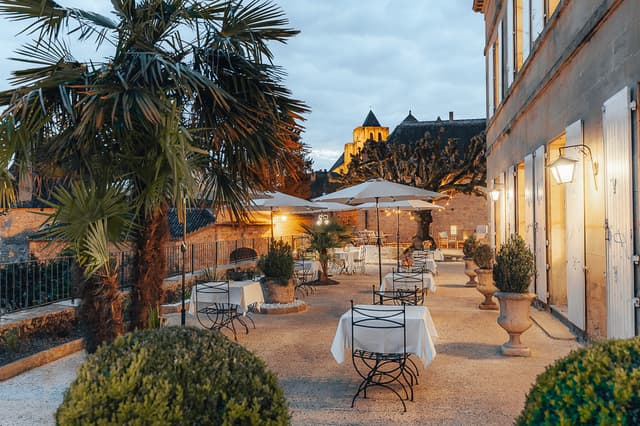
🍽️ Dining Near Château de Beynac:
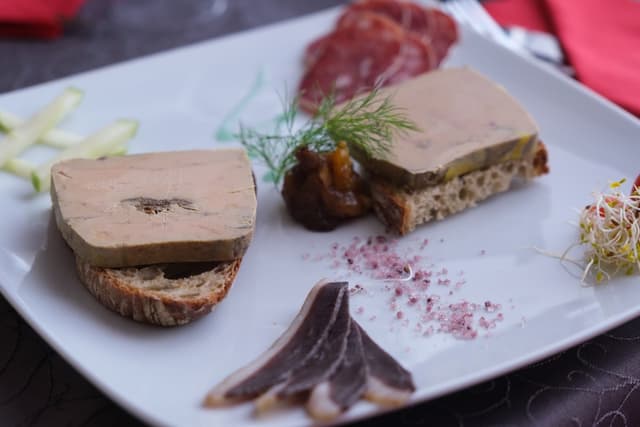
20. Palace of the Kings of Majorca
Saving Castles Regal Ranking 9/10 👑
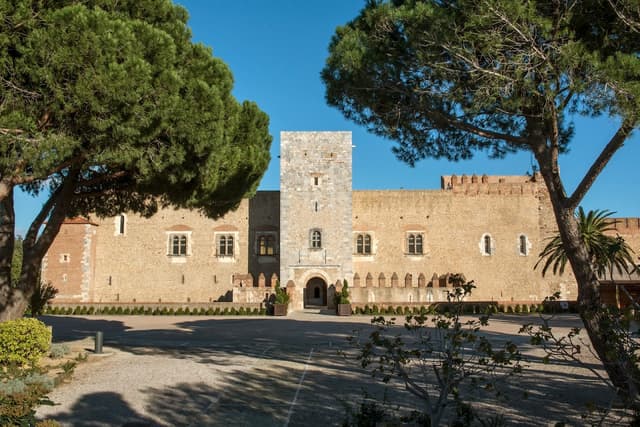
📜Palace of the Kings of Majorca's History & Visitor Experience:
The Palace of the Kings of Majorca, located in Perpignan, France, is a stunning example of Gothic architecture from the 13th and 14th centuries. Built in 1276, it served as the seat of the Kingdom of Majorca, a short-lived medieval state that included parts of modern-day France and Spain. The palace features impressive fortifications, grand halls, and beautifully preserved interiors. The visitor experience is enriched by guided tours, historical exhibits, and panoramic views of the surrounding city and landscape. Accessibility is good, making it a top destination for history enthusiasts and admirers of medieval architecture.
The palace's architecture blends Romanesque and Gothic styles, reflecting its position at the crossroads of French and Spanish influences. Its most striking features include the Great Hall, with its impressive vaulted ceiling, and the palace chapel, adorned with beautiful Gothic windows. The fortified nature of the palace is evident in its thick walls, towers, and defensive structures, showcasing its dual role as both a royal residence and a military stronghold.
Today, the Palace of the Kings of Majorca serves as a museum and cultural center. Visitors can explore its well-preserved rooms, climb the ramparts for panoramic views of Perpignan and the surrounding countryside, and learn about the rich history of the region. The palace hosts various exhibitions and events throughout the year, making it a vibrant part of Perpignan's cultural life. Its historical significance, architectural beauty, and cultural offerings make it one of the most important medieval monuments in southern France.
🎫 Recommended Tickets & Tours:
🛏️ Lodging Near Palace of the Kings of Majorca:
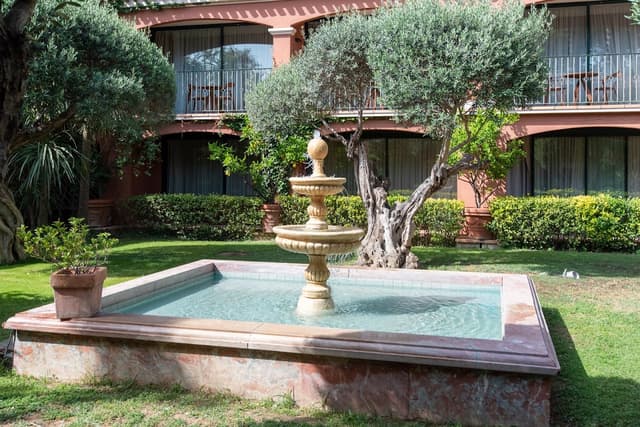
🍽️ Dining Near Palace of the Kings of Majorca:
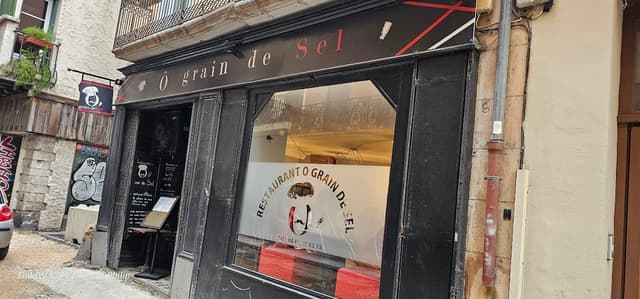
21. Château de Termes
Saving Castles Regal Ranking 7/10 👑
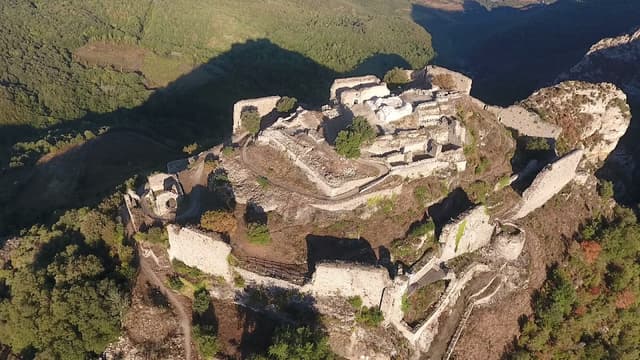
📜Château de Termes's History & Visitor Experience:
Château de Termes, perched high on a rocky spur in the Corbières mountains of southern France, is a remarkable example of Cathar castle architecture. Built in the 11th century, it played a significant role during the Albigensian Crusade and was one of the last Cathar strongholds to fall. The visitor experience is enriched by informative exhibits and guided tours that delve into its rich history. Accessibility can be challenging due to the rugged terrain, but it is a rewarding destination for history and adventure enthusiasts.
The castle's most striking feature is its dramatic location, offering commanding views of the surrounding valleys. Its ruins showcase advanced military architecture for its time, including a sophisticated system of fortifications designed to withstand long sieges. The castle famously resisted a four-month siege by Simon de Montfort in 1210, demonstrating its formidable defensive capabilities.
Today, Château de Termes stands as a poignant reminder of the Cathar resistance and the turbulent history of medieval Languedoc. While much of the castle is in ruins, ongoing restoration work allows visitors to explore the site and appreciate its historical significance. The castle's remote location and rugged terrain add to its mystique, providing visitors with a tangible connection to the dramatic events of the Cathar period. Its combination of historical importance, architectural ingenuity, and stunning natural setting makes Château de Termes a compelling destination for those interested in medieval history and Cathar heritage.
🎫 Recommended Tickets & Tours:
🛏️ Lodging Near Château de Termes:
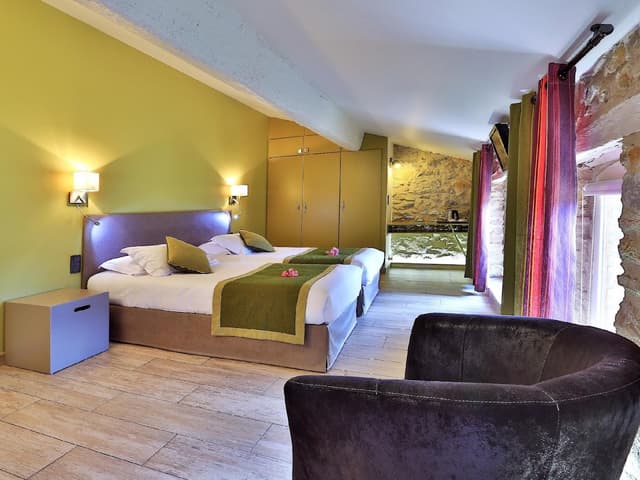
🍽️ Dining Near Château de Termes:
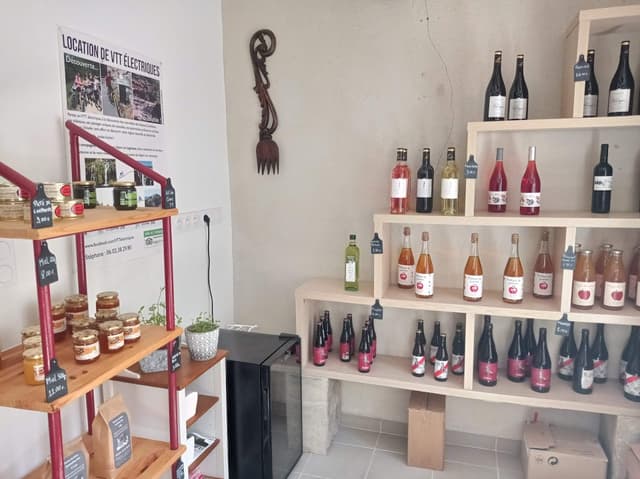
22. Saissac Castle
Saving Castles Regal Ranking 7/10 👑
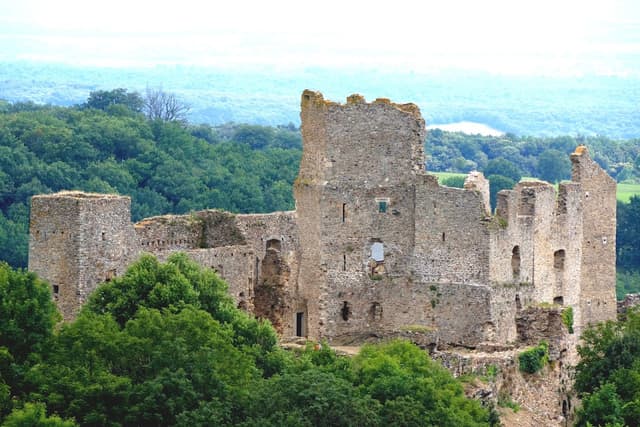
📜Saissac Castle's History & Visitor Experience:
Saissac Castle, perched on the southern slopes of the Montagne Noire in the Aude department of southern France, is a striking example of medieval Cathar architecture. Built in the 10th century, it played a significant role during the Albigensian Crusade and the subsequent centuries of border conflicts between France and Aragon.
The castle's most impressive feature is its dramatic setting, offering panoramic views over the Lauragais plain towards the Pyrenees. Its architecture reflects various periods of construction and renovation, with elements ranging from the original medieval fortifications to later Renaissance additions. The ruins still showcase impressive defensive features, including thick walls, towers, and a deep moat cut into the rock.
Today, Saissac Castle is partially restored and open to the public. Visitors can explore the ruins, including the remains of the lord's residence, the chapel, and the impressive keep. The site also houses a small museum showcasing artifacts found during archaeological excavations, including a hoard of medieval coins discovered in 1979. This combination of historical significance, architectural interest, and stunning views makes Saissac Castle a captivating destination for those interested in Cathar history and medieval architecture.
🎫 Recommended Tickets & Tours:
🛏️ Lodging Near Saissac Castle:
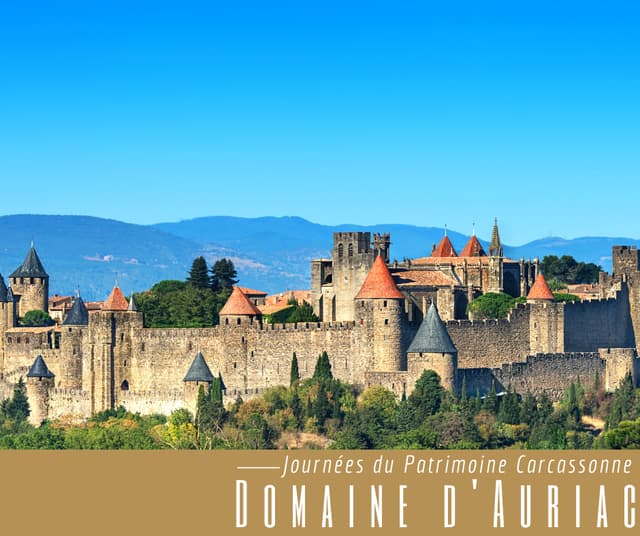
🍽️ Dining Near Saissac Castle:
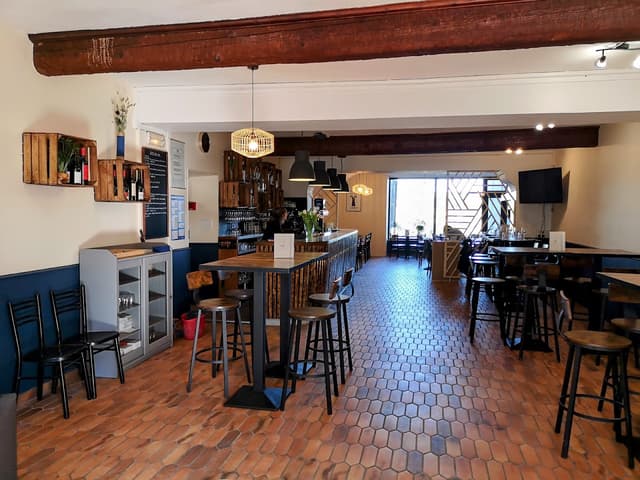
23. Château de Villerouge-Termenès
Saving Castles Regal Ranking 8/10 👑
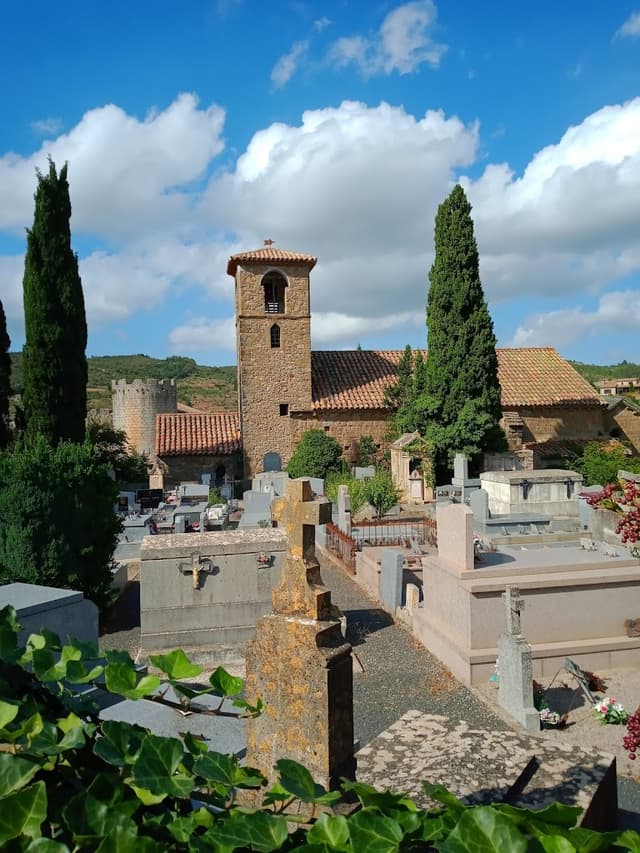
📜Château de Villerouge-Termenès' History & Visitor Experience:
Château de Villerouge-Termenès, located in the Corbières region of southern France, is a well-preserved medieval fortress with a rich history tied to the Cathar period. Built in the 12th century, it served as a residence for the Archbishops of Narbonne and played a significant role during the Albigensian Crusade. The visitor experience is enriched by interactive exhibits, guided tours, and the castle's authentic medieval ambiance. Accessibility is good, making it an engaging destination for history enthusiasts and those interested in the Cathar legacy.
The castle is notable for its impressive state of preservation, featuring four circular towers connected by high curtain walls, creating a classic square plan typical of medieval military architecture. Its most distinctive feature is the imposing entrance gate, flanked by two massive towers. The interior courtyard and some of the rooms have been restored, offering visitors a glimpse into medieval life.
Villerouge-Termenès is particularly famous as the site where the last known Cathar perfectus, Guilhem Bélibaste, was burned at the stake in 1321, marking the end of the Cathar movement. Today, the castle houses a museum dedicated to medieval history and the Cathar period, featuring interactive exhibits and multimedia presentations. Its combination of well-preserved architecture, historical significance, and educational exhibits makes Château de Villerouge-Termenès an important destination for those interested in Cathar history and medieval French architecture.
🎫 Recommended Tickets & Tours:
🛏️ Lodging Near Château de Villerouge-Termenès:
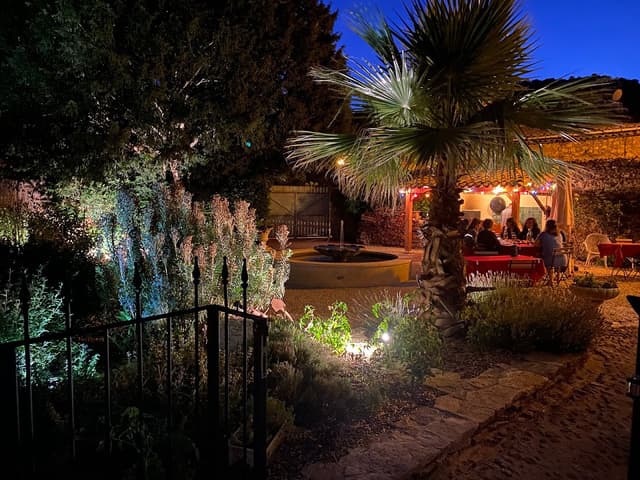
🍽️ Dining Near Château de Villerouge-Termenès:
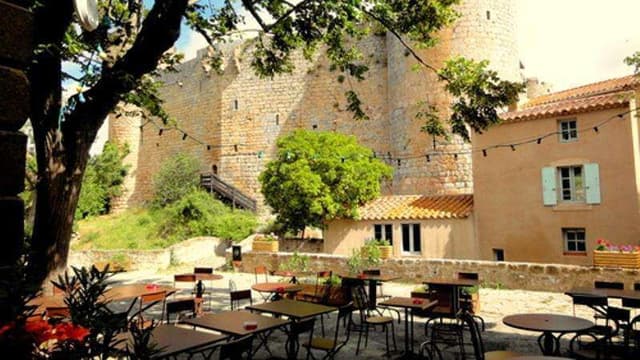
24. Château de Portes
Saving Castles Regal Ranking 7/10 👑
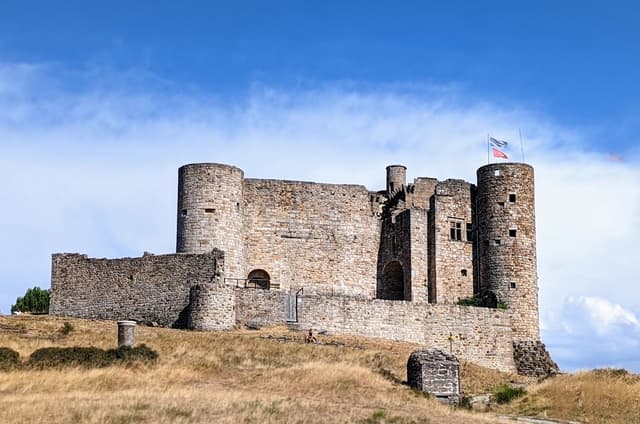
📜Château de Portes' History & Visitor Experience:
Château de Portes, also known as Portes Castle, is a remarkable medieval fortress located in the Cévennes region of southern France. Built in the 11th century and extensively modified over the centuries, it stands as a striking example of medieval and Renaissance architecture.
The visitor experience includes guided tours and historical exhibits that highlight its strategic importance and architectural features. Accessibility can be challenging due to the rugged terrain, but it is a fascinating destination for history and architecture enthusiasts.
The castle's most distinctive feature is its unique arrow-shaped architecture, designed to withstand attacks from all sides. This unusual layout, resembling the prow of a ship, makes it one of the most recognizable castles in France. Perched atop a hill, it offers commanding views of the surrounding valleys and was strategically important for controlling the ancient trade route known as the Regordane Way.
Today, Château de Portes is partially restored and open to the public. Visitors can explore its impressive defenses, including the barbican, drawbridge, and various towers. The castle also hosts cultural events and medieval reenactments throughout the year. Its striking architecture, historical significance, and panoramic views make Portes Castle a captivating destination for those interested in medieval history and unique castle designs.
🎫 Recommended Tickets & Tours:
🛏️ Lodging Near Château de Portes:

🍽️ Dining Near Château de Portes:
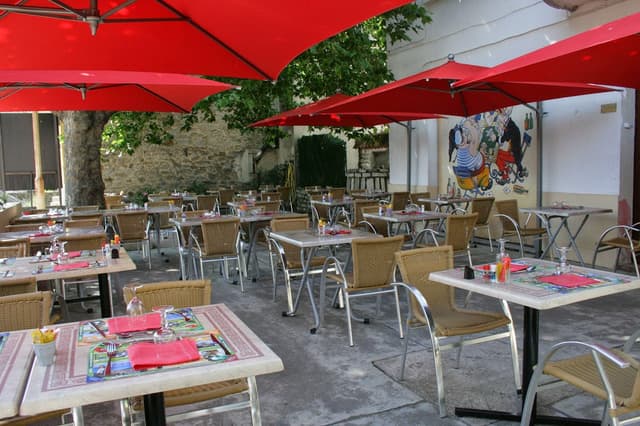
25. Royal Castle of Collioure
Saving Castles Regal Ranking 8/10 👑
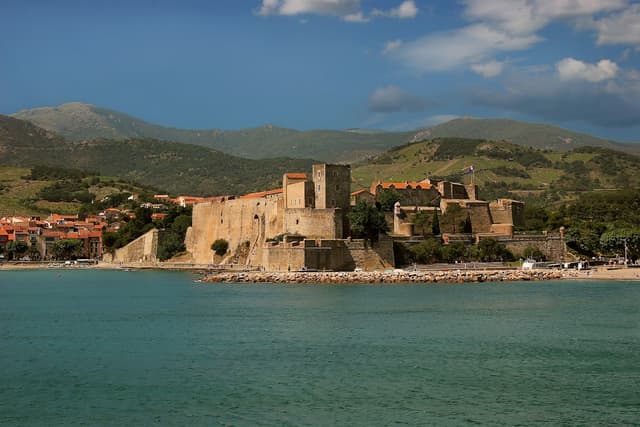
📜Royal Castle of Collioure's History & Visitor Experience:
The Royal Castle of Collioure, situated on the Mediterranean coast in southern France, is a striking fortress with a rich history spanning over a millennium. Originally built by the Visigoths in the 7th century, it was significantly expanded and fortified during the Middle Ages and the Renaissance period. Visitor experience is enhanced by guided tours and the charming town of Collioure. Accessibility is good, making it a rewarding destination for history and architecture enthusiasts.
The castle's most notable features are its massive walls and round towers, which rise impressively from the sea. Its strategic location at the harbor entrance made it a key defensive stronghold, controlling maritime access to the region. The castle's architecture reflects various periods of construction, with elements from medieval, Renaissance, and 17th-century military design.
Throughout its history, the Royal Castle of Collioure has played significant roles under different rulers, including the Kings of Majorca, the Kings of Aragon, and later the French monarchy. Today, it serves as a museum and cultural center, offering visitors a journey through its diverse history. The castle's picturesque setting against the backdrop of the colorful town of Collioure and the Mediterranean Sea makes it not only a historical landmark but also a favorite subject for artists, famously inspiring Fauvists like Matisse and Derain.
🎫 Recommended Tickets & Tours:
🛏️ Lodging Near Royal Castle of Collioure:
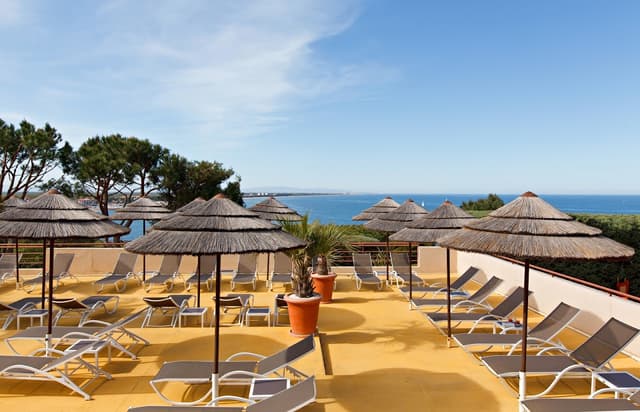
🍽️ Dining Near Royal Castle of Collioure:
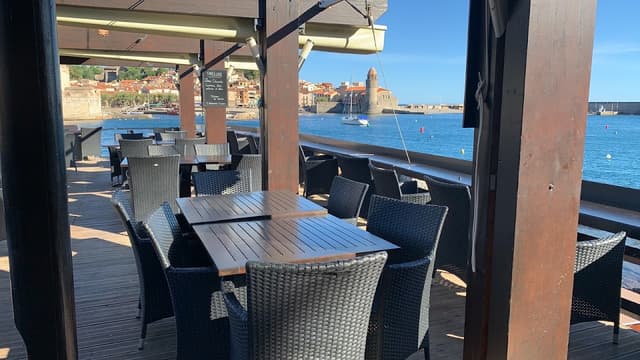
26. Château de Viviourès
Saving Castles Regal Ranking 6/10 👑
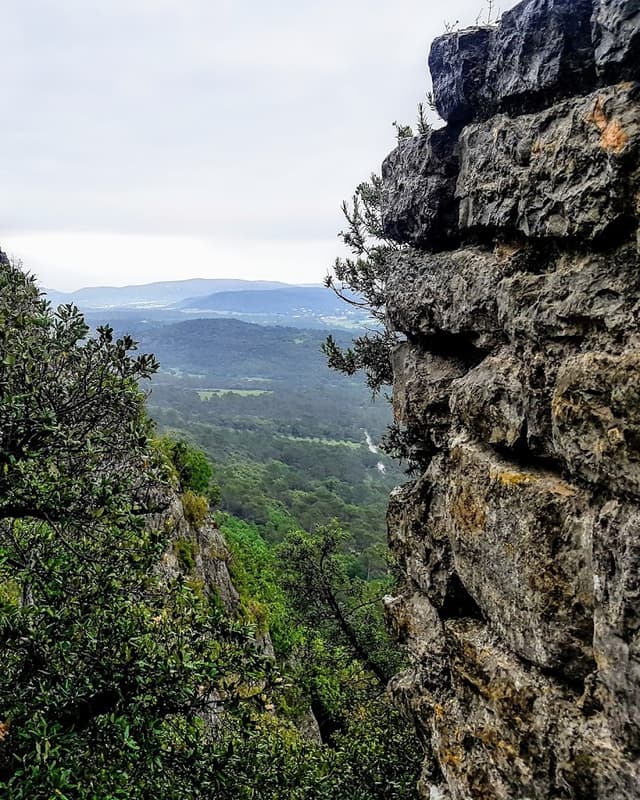
📜Château de Viviourès' History & Visitor Experience:
Château de Viviourès is a lesser-known castle located in the Languedoc-Roussillon region of southern France. Built in the 13th century, it stands as an example of medieval architecture in the area, though detailed information about its history and specific features is limited in widely available sources.
While the visitor experience is modest, with limited facilities and exhibits, it provides an intimate glimpse into regional history. Accessibility is reasonable, though the rugged terrain may pose challenges, making it a suitable destination for those seeking a quieter, off-the-beaten-path historical site.
The château is believed to have been constructed as a fortified residence during the tumultuous period of the Albigensian Crusade, reflecting the need for defensive structures in the region at that time. Its architecture likely incorporates elements typical of medieval castles in southern France, such as thick walls and strategic positioning for defense.
🎫 Recommended Tickets & Tours:
🛏️ Lodging Near Château de Viviourès:
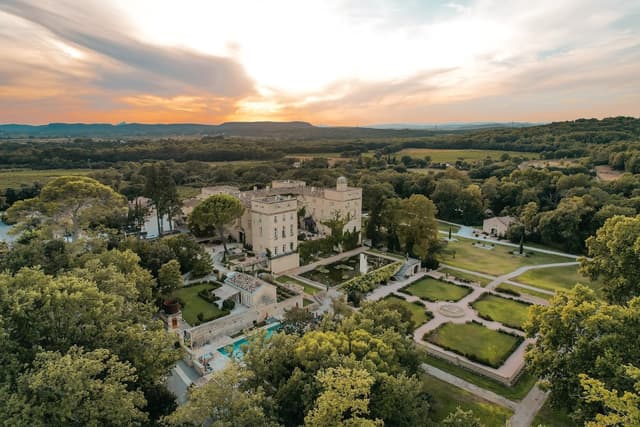
🍽️ Dining Near Château de Viviourès:
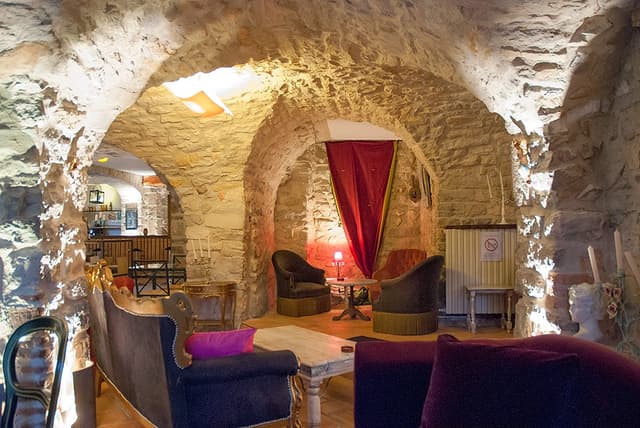
27. Château d'Aulan
Saving Castles Regal Ranking 7/10 👑

📜Château d'Aulan's History & Visitor Experience:
Château d'Aulan is a picturesque castle located in the Drôme department of southeastern France, in the small village of Aulan. Built in the 12th century, it has undergone several renovations and additions over the centuries, resulting in a blend of medieval and Renaissance architectural styles.
Visitor experience is enhanced by guided tours that delve into its rich history and restoration efforts. Accessibility is good, making it an appealing destination for those interested in historical architecture and serene landscapes.
The castle's most striking feature is its setting, perched on a rocky outcrop overlooking the village and surrounding valleys of the Baronnies Provençales Regional Natural Park. Its architecture includes elements typical of both defensive medieval fortresses and later, more comfortable noble residences, including towers, thick walls, and large windows added in later periods.
Today, Château d'Aulan remains privately owned but is open to the public for guided tours during certain periods of the year. Visitors can explore parts of the castle and its gardens, learning about its history and the various families who have owned it over the centuries. The château's picturesque location and well-preserved state make it a charming example of the many smaller, less-known castles that dot the French countryside, offering a more intimate glimpse into regional history and architecture compared to some of the country's more famous castles.
🎫 Recommended Tickets & Tours:
🛏️ Lodging Near Château d'Aulan:
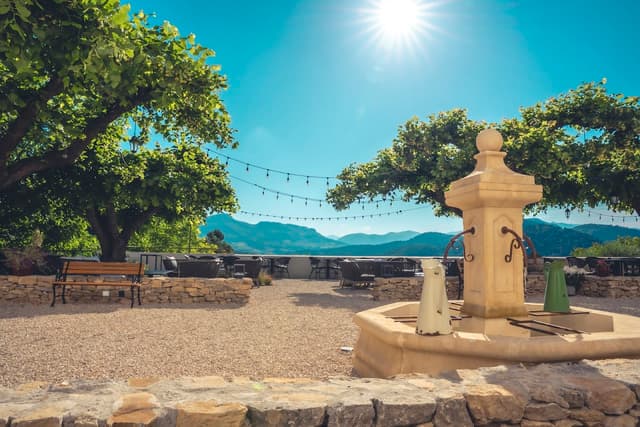
🍽️ Dining Near Château d'Aulan:
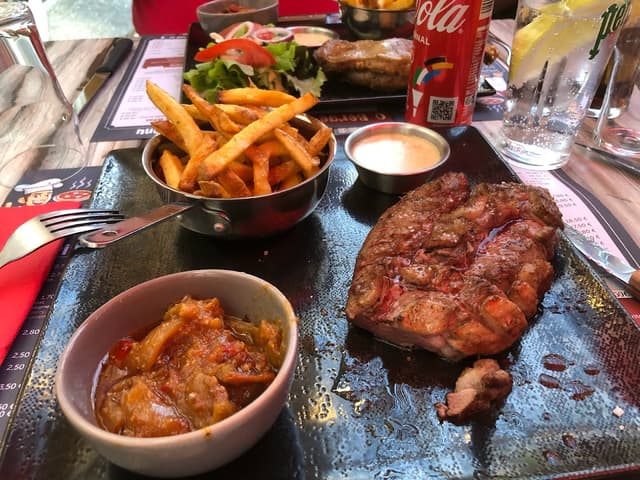
28. Château Grimaldi
Saving Castles Regal Ranking 8/10 👑
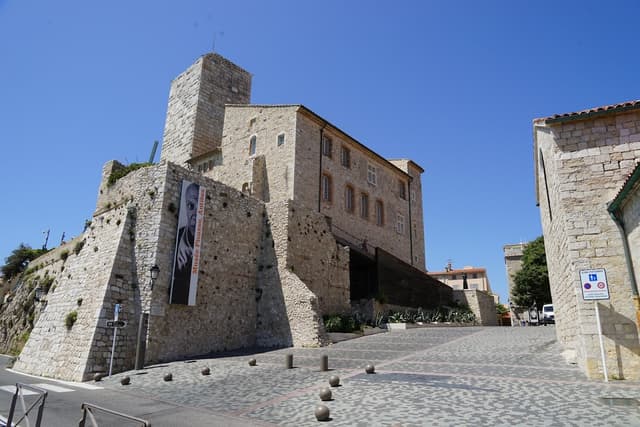
📜Château Grimaldi's History & Visitor Experience:
Château Grimaldi, located in Antibes on the French Riviera, is a historic fortress with a rich and varied history. Originally built on the foundations of the ancient Greek town of Antipolis, the castle has served many purposes over the centuries. The visitor experience is enriched by guided tours, art exhibits, and cultural events. Accessibility is good, making it a must-visit for art lovers and those interested in historical architecture.
The château was initially constructed in the 12th century as a stronghold for the Bishops of Antibes. It later became the residence of the Grimaldi family (rulers of Monaco) in the 14th century, from whom it derives its name. The castle's architecture reflects various periods of construction and renovation, blending medieval defensive elements with later Renaissance and Baroque additions.
In modern times, Château Grimaldi has found a new purpose as the Picasso Museum. Pablo Picasso used the castle as his studio for several months in 1946, and today it houses an impressive collection of his works, as well as pieces by other notable artists. The museum's setting in this historic building, with its stunning views over the Mediterranean, creates a unique artistic and cultural experience. The transformation of Château Grimaldi from a medieval fortress to a celebrated art museum exemplifies the evolving role of historic buildings in contemporary society.
🎫 Recommended Tickets & Tours:
🛏️ Lodging Near Château Grimaldi:
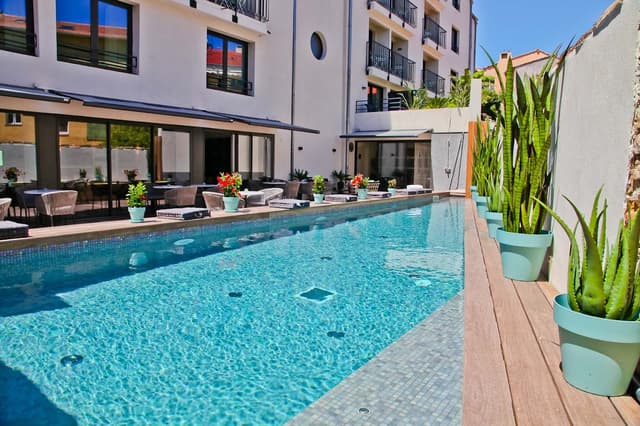
🍽️ Dining Near Château Grimaldi:
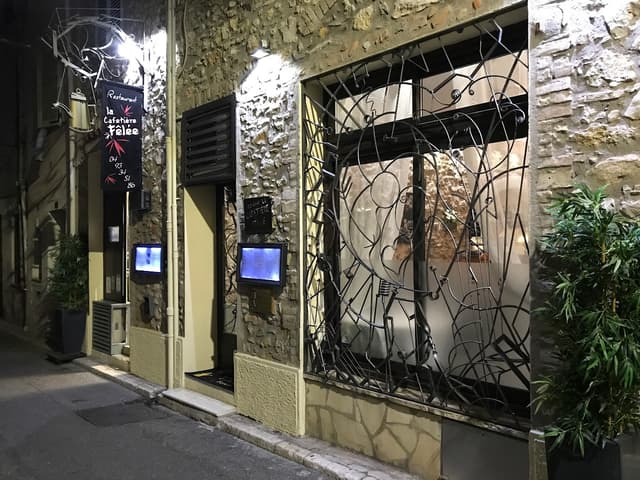
29. Les Quatre Châteaux de Lastours
Saving Castles Regal Ranking 8/10 👑
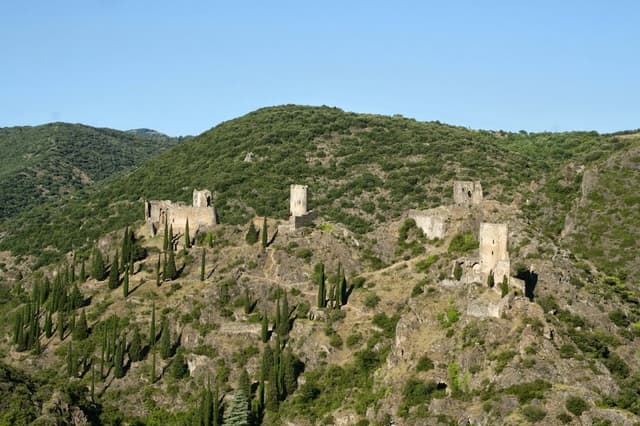
📜Les Quatre Châteaux de Lastours' History & Visitor Experience:
Les Quatre Châteaux de Lastours, or the Four Castles of Lastours, is a remarkable group of castles located in the Aude department of southern France. Built in the 11th and 12th centuries, these fortresses stand as impressive examples of Cathar military architecture.
The visitor experience is enhanced by the dramatic setting, scenic views, and informative exhibits about their history. Accessibility can be challenging due to the steep terrain, but the site is a rewarding destination for history enthusiasts and adventure seekers.
The castles - Cabaret, Surdespine, Quertinheux, and Tour Régine - are perched dramatically on a rocky spur, each on its own peak, creating a formidable defensive complex. Their strategic position offered control over the Orbiel Valley and the surrounding region. The castles played a significant role during the Albigensian Crusade and were among the last Cathar strongholds to fall.
Today, the ruins of these four castles create a striking silhouette against the sky, offering visitors a glimpse into medieval military engineering and the turbulent history of the Cathar period. The site includes a visitor center with exhibits on the castles' history and the Cathar culture. Climbing to the castles provides panoramic views of the Languedoc countryside, making Les Quatre Châteaux de Lastours not only a historically significant site but also a visually spectacular destination.
🎫 Recommended Tickets & Tours:
🛏️ Lodging Near Les Quatre Châteaux de Lastours:

🍽️ Dining Near Les Quatre Châteaux de Lastours:
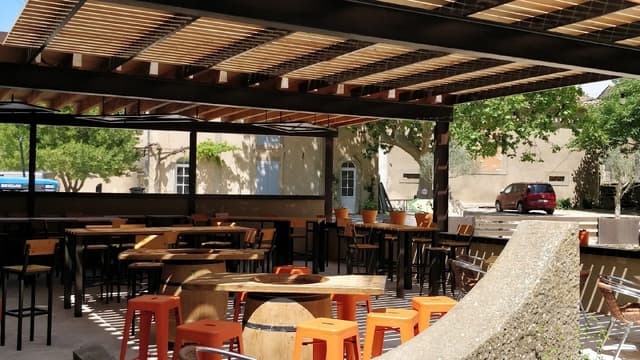
30. Château Borély
Saving Castles Regal Ranking 8/10 👑
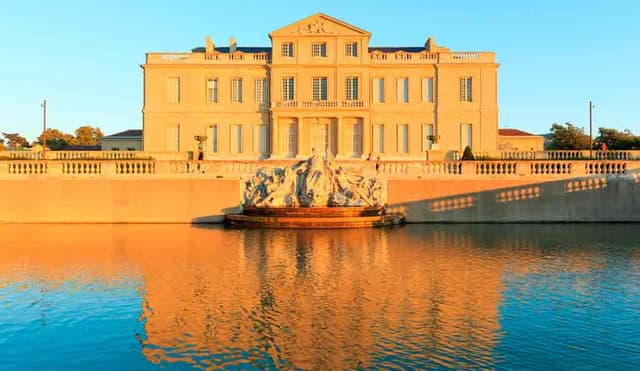
📜Château Borély's History & Visitor Experience:
Château Borély is an elegant 18th-century country mansion located in Marseille, France. Built between 1766 and 1778, it stands as a fine example of Provençal Baroque architecture. The visitor experience is enriched by well-preserved interiors, informative exhibits, and the serene park surrounding the château. Accessibility is excellent, making it a must-visit for art and history enthusiasts exploring Marseille.
The château was commissioned by Louis Borély, a wealthy merchant, and designed by the architect Charles-Louis Clérisseau. Its most striking features include its symmetrical façade, ornate decorations, and the surrounding French-style gardens. The interior is noted for its lavish rococo and neoclassical decorations, including intricate plasterwork, frescoes, and period furnishings.
Today, Château Borély houses the Museum of Decorative Arts, Earthenware, and Fashion. The museum showcases a rich collection of decorative arts from the 17th to the 21st centuries, including furniture, ceramics, glassware, and fashion items. The château and its surrounding park offer visitors a glimpse into the refined lifestyle of 18th-century Marseille aristocracy while providing a cultural hub for art and design enthusiasts. Its transformation from a private residence to a public museum exemplifies the evolving role of historic buildings in preserving and presenting cultural heritage.
🎫 Recommended Tickets & Tours:
🛏️ Lodging Near Château Borély:
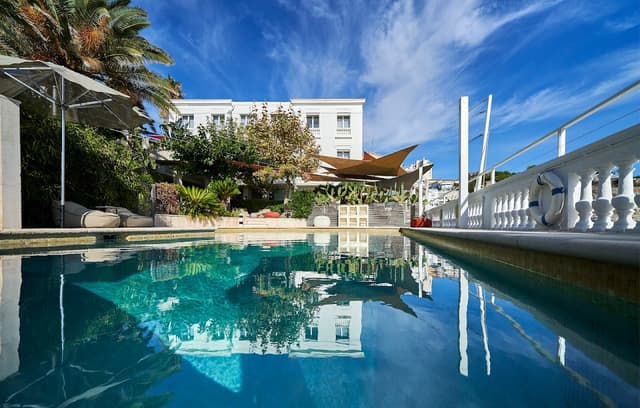
🍽️ Dining Near Château Borély:

💡 Saving Castles Tips and Final Thoughts
We're thrilled you've chosen to explore the magnificent chateaux of France with us. Let's dive into some final tips to make your chateau adventures truly unforgettable.
Planning Your Visit
First things first – planning your visit. It's always a good idea to book your tickets in advance, especially during the busy summer months. Don't forget to pack comfortable shoes – you'll be doing plenty of walking! – and maybe a light jacket. French weather can be lovely, but it can also be unpredictable, even in summer.
Timing is Everything
Speaking of weather, let's talk about timing. If you're after those picture-perfect shots without the crowds, try visiting early in the morning or later in the afternoon. The light is often magical during these times, perfect for capturing the chateau's grandeur against the backdrop of manicured French gardens.
Spring (April to mid-June): The Goldilocks season – not too hot, not too cold. Gardens burst into bloom, and you might catch the Loire Valley Wine Festival in May.
Summer (mid-June to August): Peak season with warm weather and long days. Perfect for château hopping, but book well in advance – these places fill up faster than a royal banquet table.
Fall (September to November): A photographer's dream with stunning foliage. Fewer crowds and cozy evenings by the fireplace. Don't miss the European Heritage Days in September for free entry to many sites.
Winter (December to March): Imagine snow-dusted châteaux straight out of a fairy tale. Some castles have limited hours, but you'll have them almost to yourself.
Photography Tips
Oh, and if you're into photography, don't miss the chance to snap some shots from unusual angles – maybe through an ornate window or framed by a perfectly trimmed topiary. The symmetry of French formal gardens often provides stunning photo opportunities.
Soaking in the History
Now, as you wander through these elegant halls, take a moment to soak in the history. Each stone has a story to tell. Did you know that some of these chateaux have hosted famous artists, been the backdrop for political intrigues, and even played roles in shaping French history? Ask the guides about the chateau's most famous (or infamous) residents – their tales are often more dramatic than any Hollywood script!
Family-Friendly Fun
If you're visiting with little ones, keep an eye out for the family-friendly activities many chateaux offer. From dressing up in period costumes to interactive exhibits about Renaissance life, there's plenty to keep young minds engaged. And don't worry if you hear a little one's excited chatter echoing through the grand salon – most chateau staff understand that enthusiasm can sometimes be a bit noisy!
Dining Options
Feeling peckish? Many chateaux have on-site cafes serving traditional French fare. It's a great opportunity to try local specialties or even sample wines from the chateau's own vineyards. If the weather's nice, why not pack a picnic? Just check if the chateau grounds allow it – some have designated picnic areas with views that'll make your baguette and cheese taste even better.
Supporting Conservation
As you explore, you might notice ongoing restoration work. Your visit actually helps fund these efforts to preserve these magnificent structures for future generations. If you're really passionate, ask about volunteer opportunities or how you can donate to specific projects.
Seasonal Events
Keep an eye on the chateau's event calendar too. Many host seasonal events like Christmas markets, summer concerts in the gardens, or historical reenactments. These can add an extra layer of magic to your visit.
Extra Costs to Consider
Meals: Budget €30-€100 per person for dinner (because château dining is an experience in itself)
Activities: Castle entry fees (€10-€20 each), wine tastings (€15-€50), tours (€50-€100)
Transportation: Car rental (€30-€70 per day) or train tickets (€20-€50 one-way from Paris)
Respecting the Past
Lastly, remember to be respectful of these historic buildings. Stick to marked paths, don't touch artifacts unless invited to, and be mindful of other visitors. These simple courtesies help ensure these chateaux remain standing for centuries to come.
We hope these tips help you make the most of your chateau tour. Each chateau is unique, with its own character and stories. So keep your eyes open, your imagination active, and get ready for a journey through French history and culture. Bon voyage!
Happy Exploring!
Monte & Sixteen Schumacher
🗪 FAQs About Château Stays
Q: Are château hotels family-friendly?
Q: Do I need to speak French to enjoy a château stay?
A: While it's always appreciated to learn a few phrases, most château hotels cater to international guests. Staff typically speak English, and many offer services in multiple languages.
Q: What should I pack for a château stay?
A: Think "smart casual" with a touch of elegance. Pack comfortable walking shoes for exploring grounds, a swimsuit for pools or spas, and perhaps one dressier outfit for fine dining experiences.
Q: Can I visit châteaux if I'm not staying overnight?
A: Absolutely! Most châteaux offer day visits. However, staying overnight provides a more immersive experience and often includes perks like early access to the grounds.
The home for unique & authentic travel






